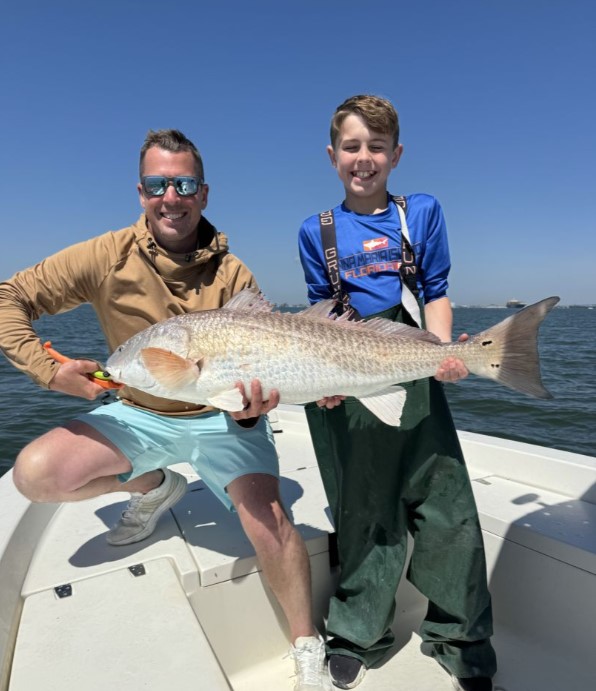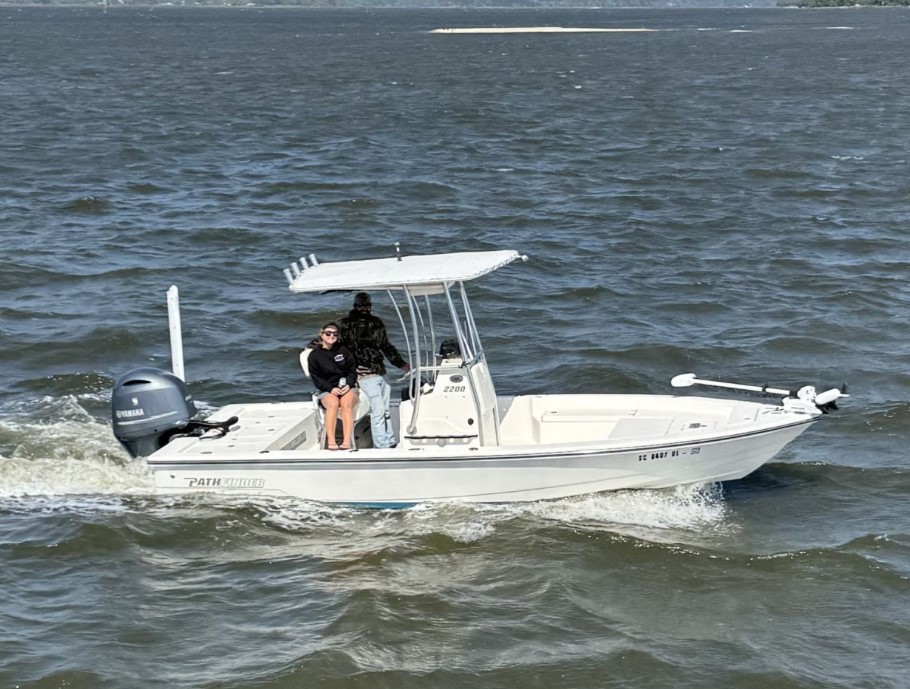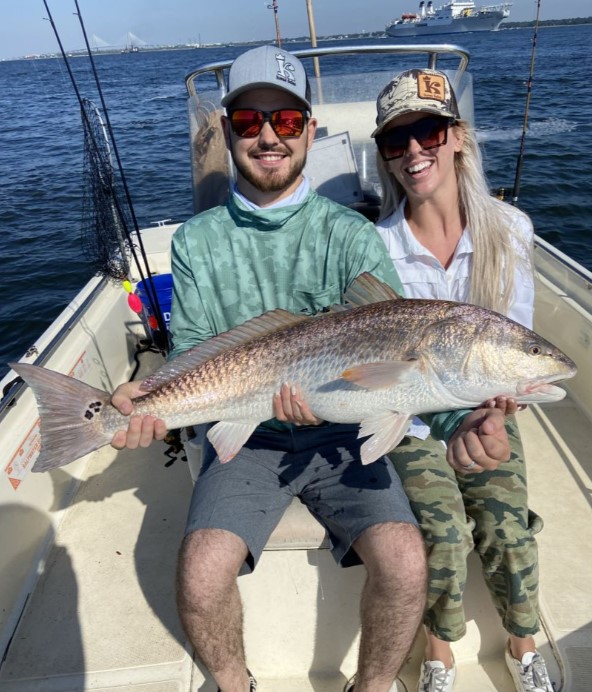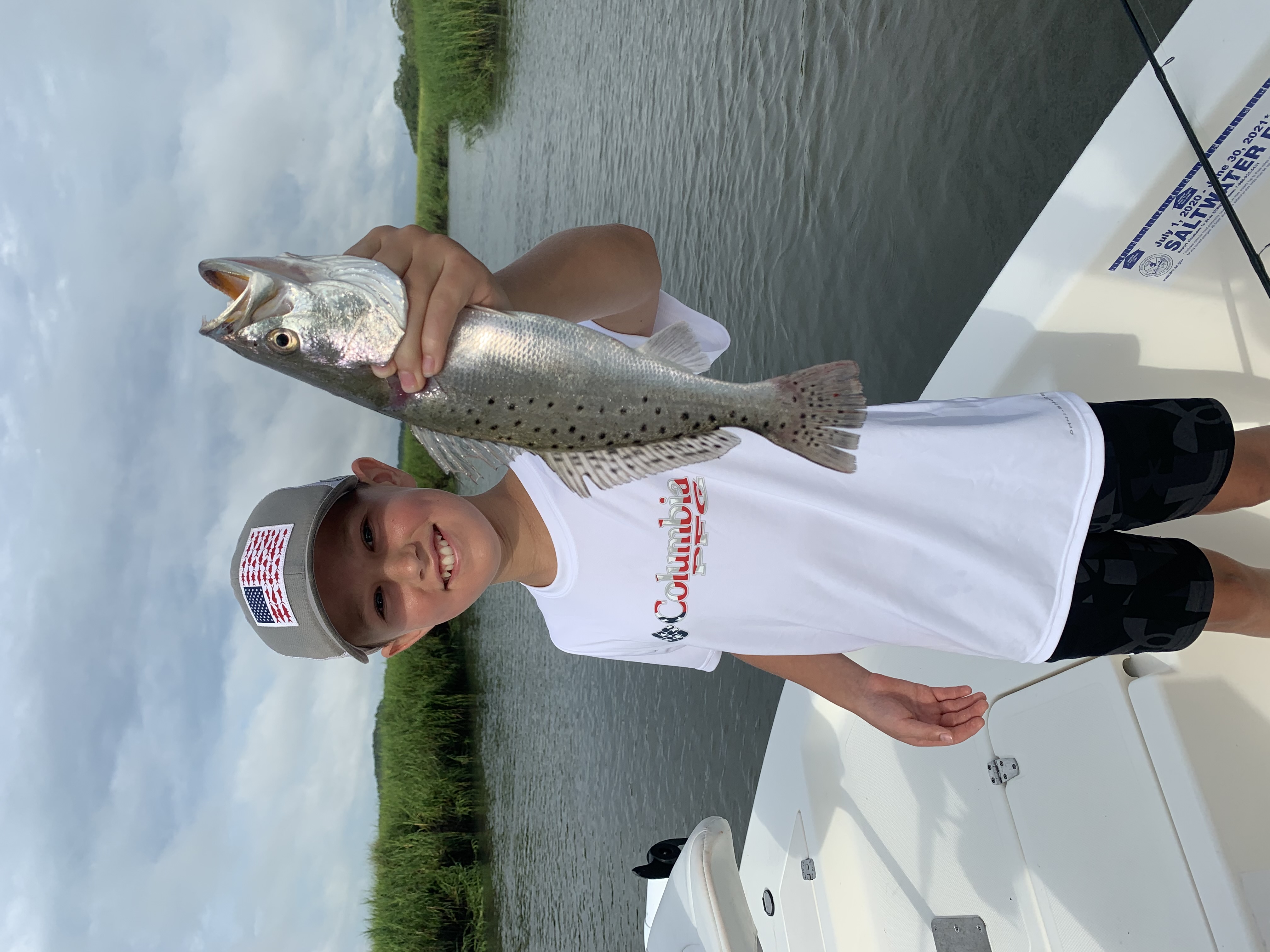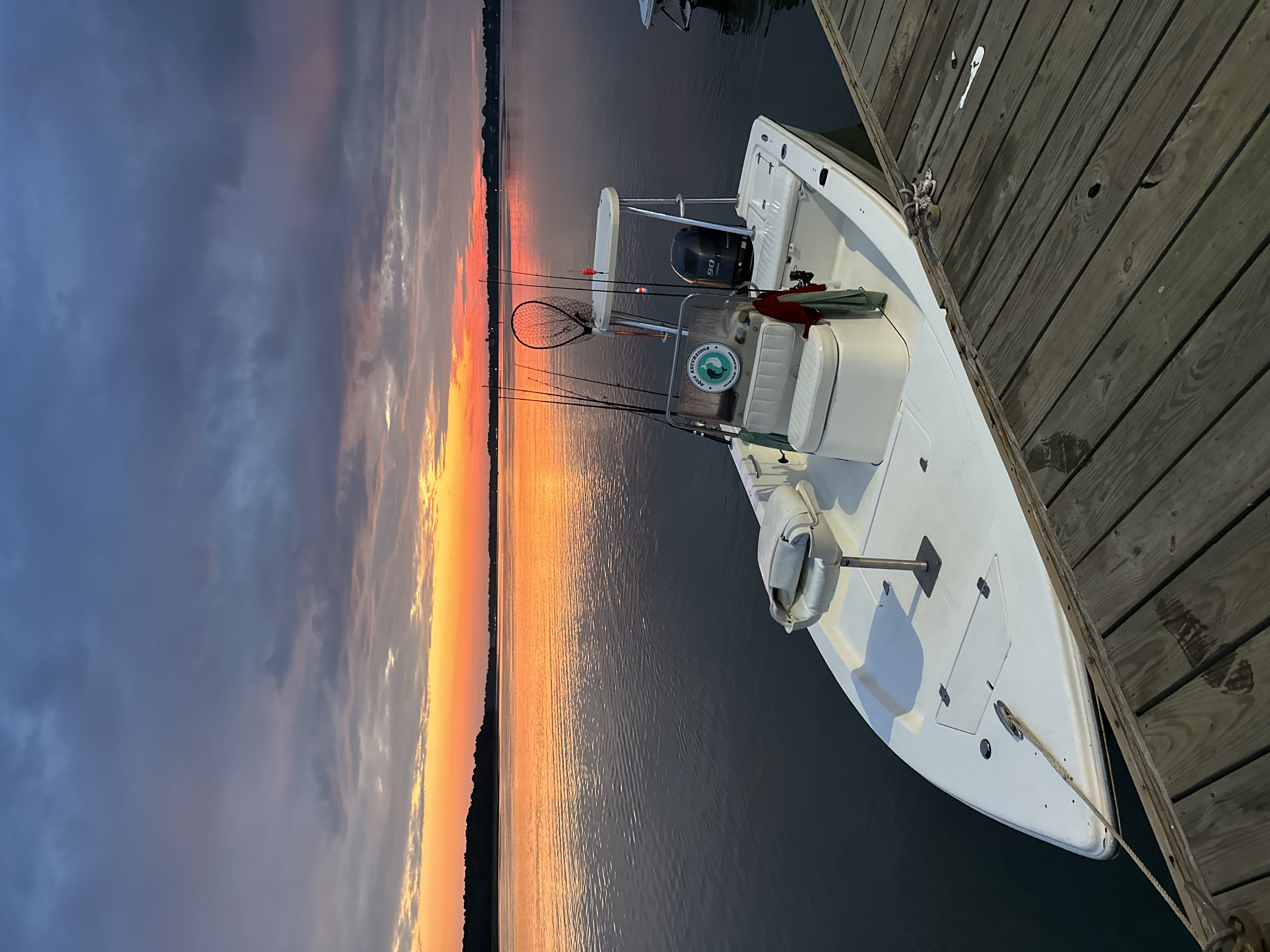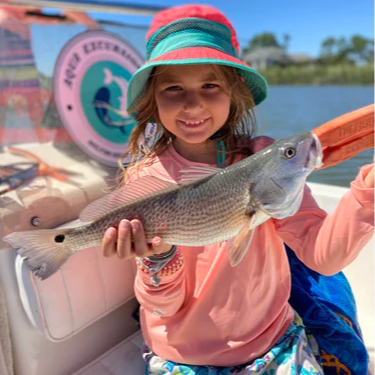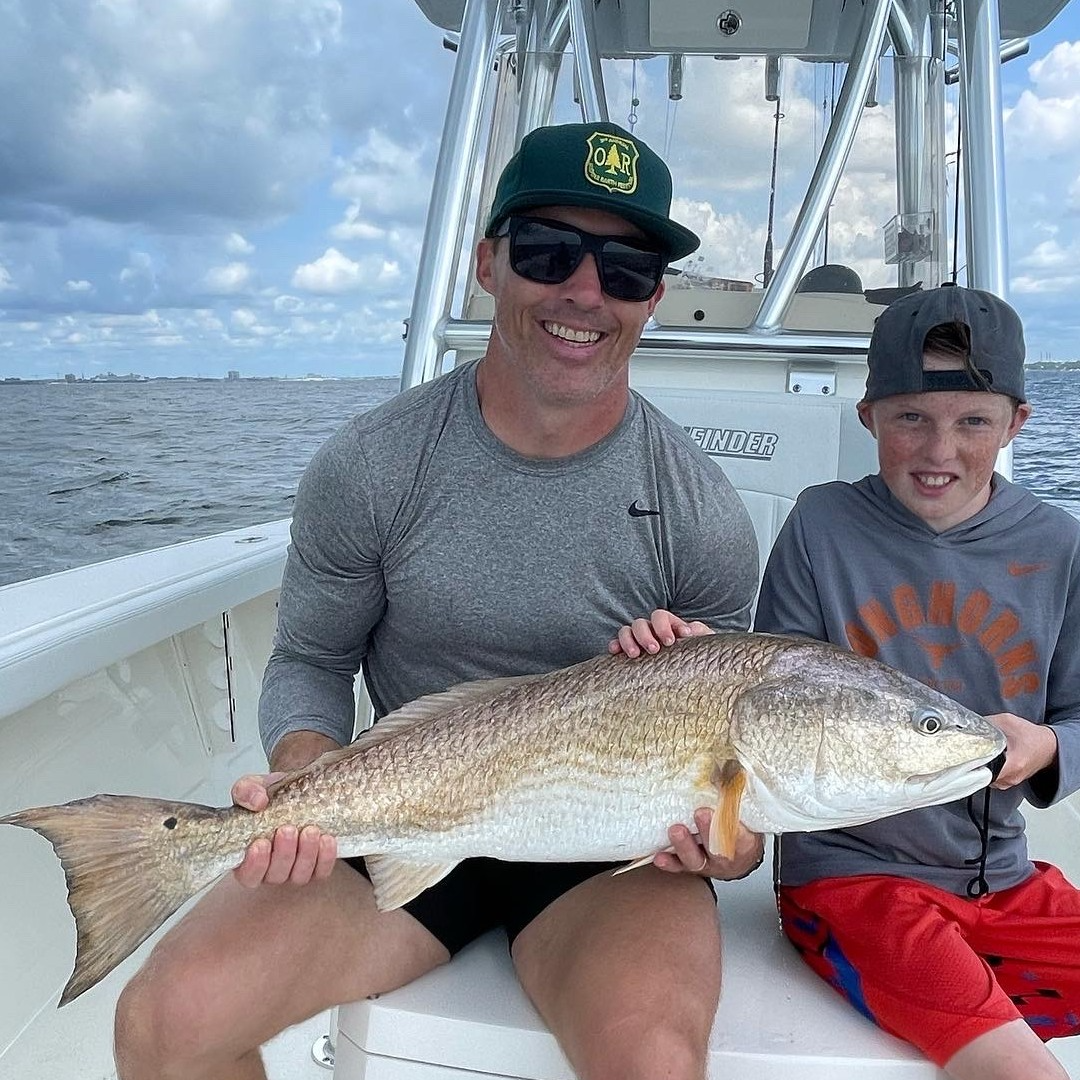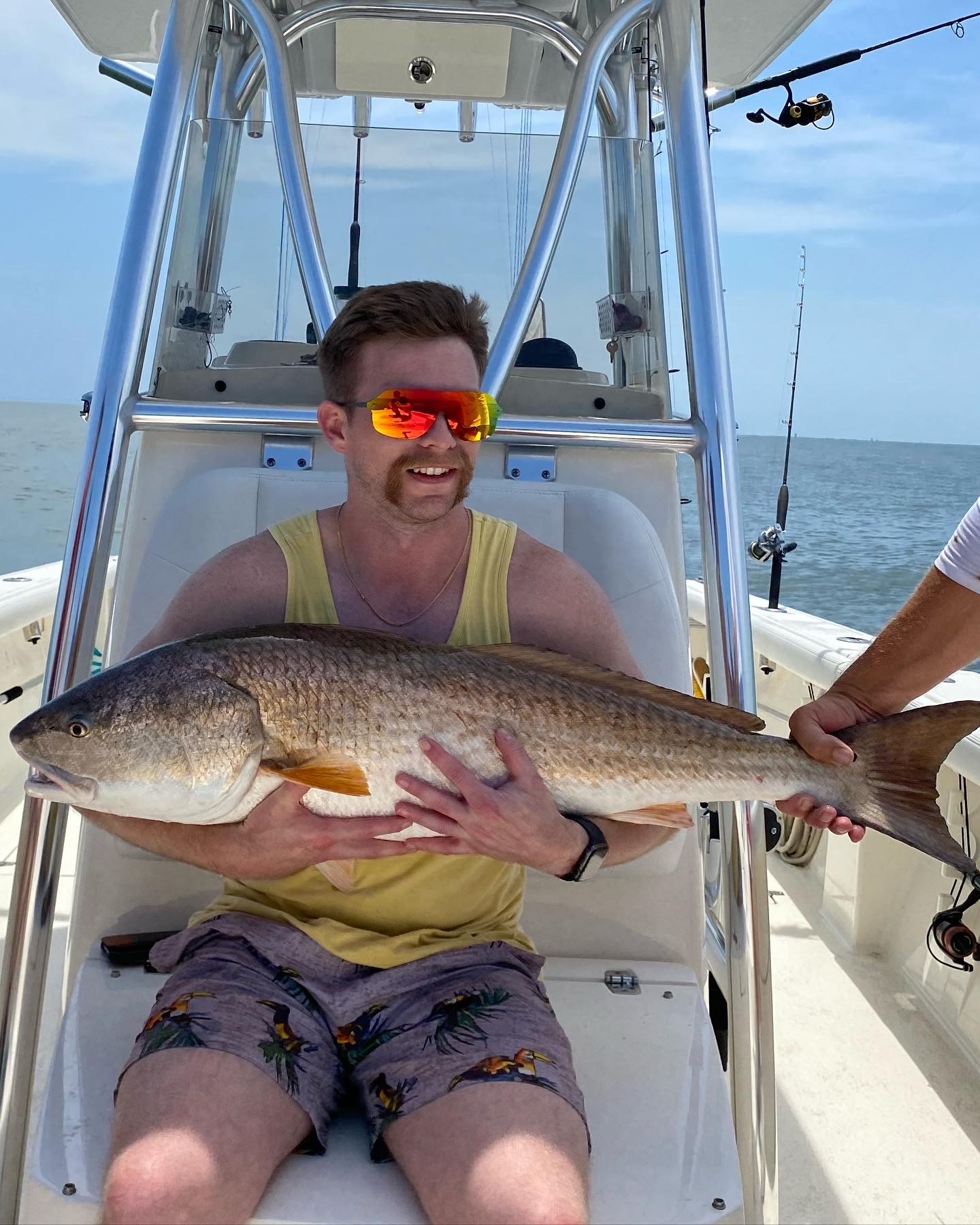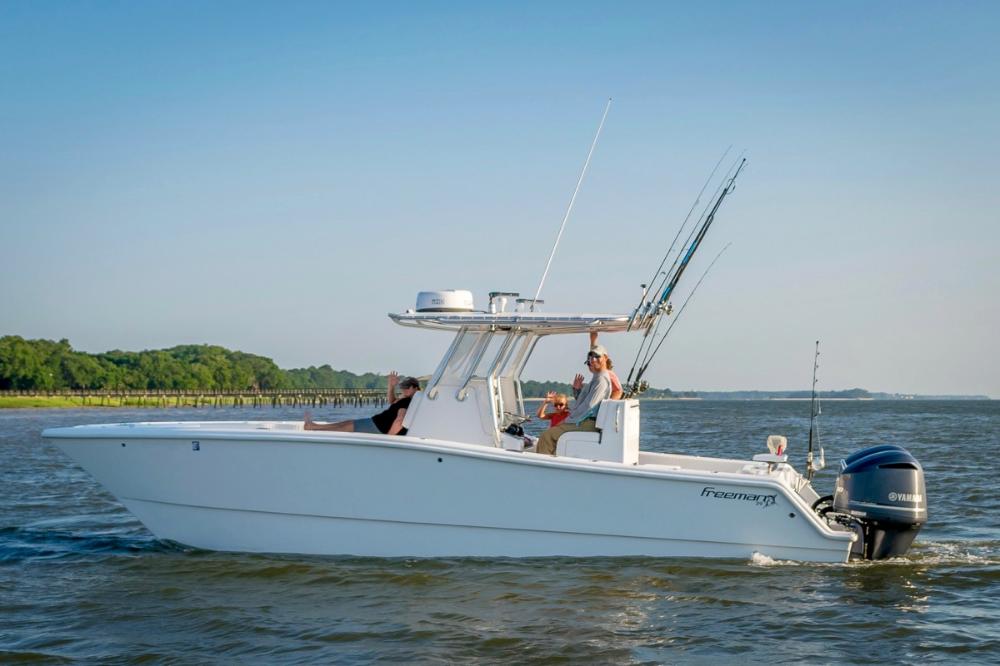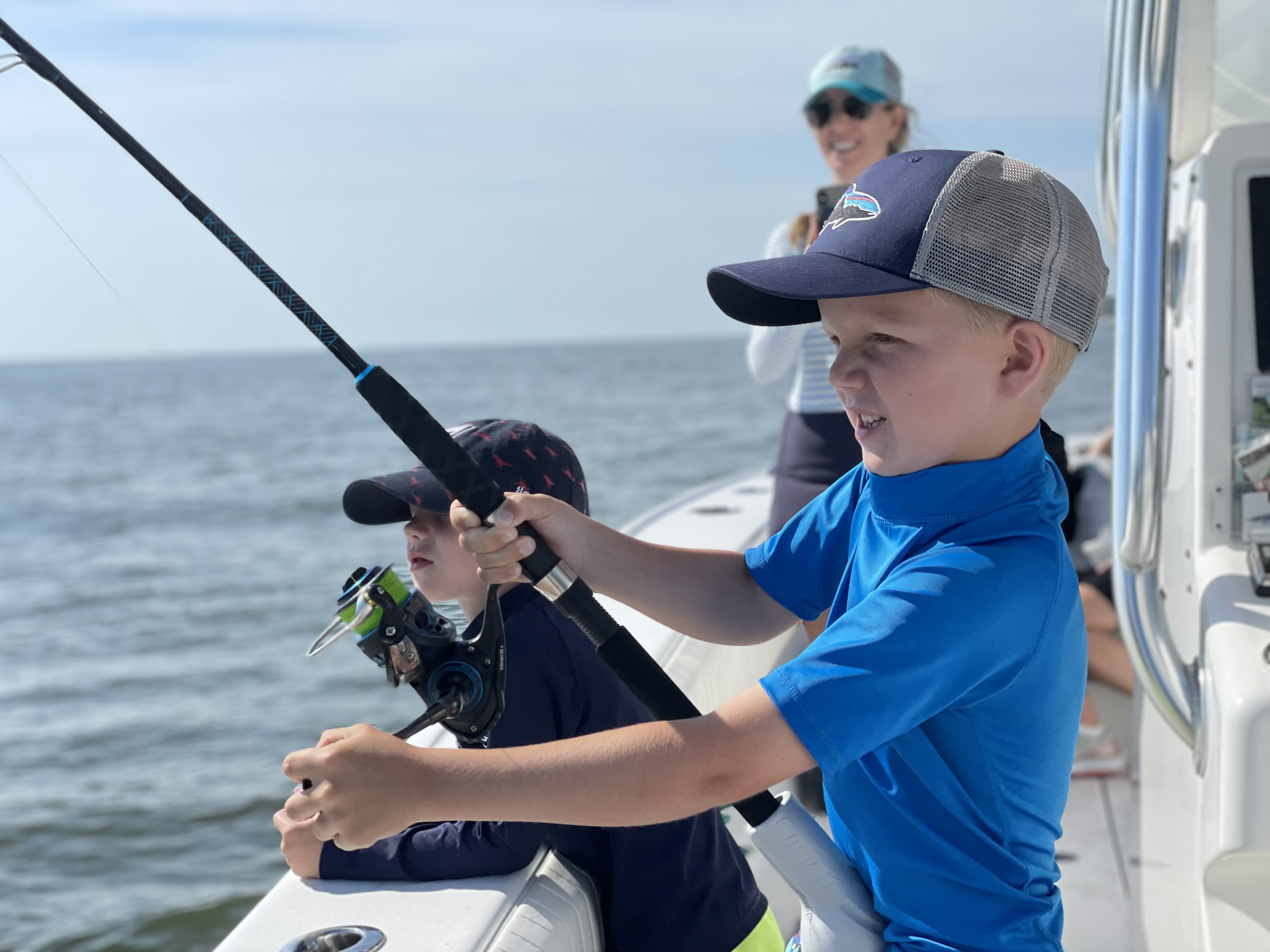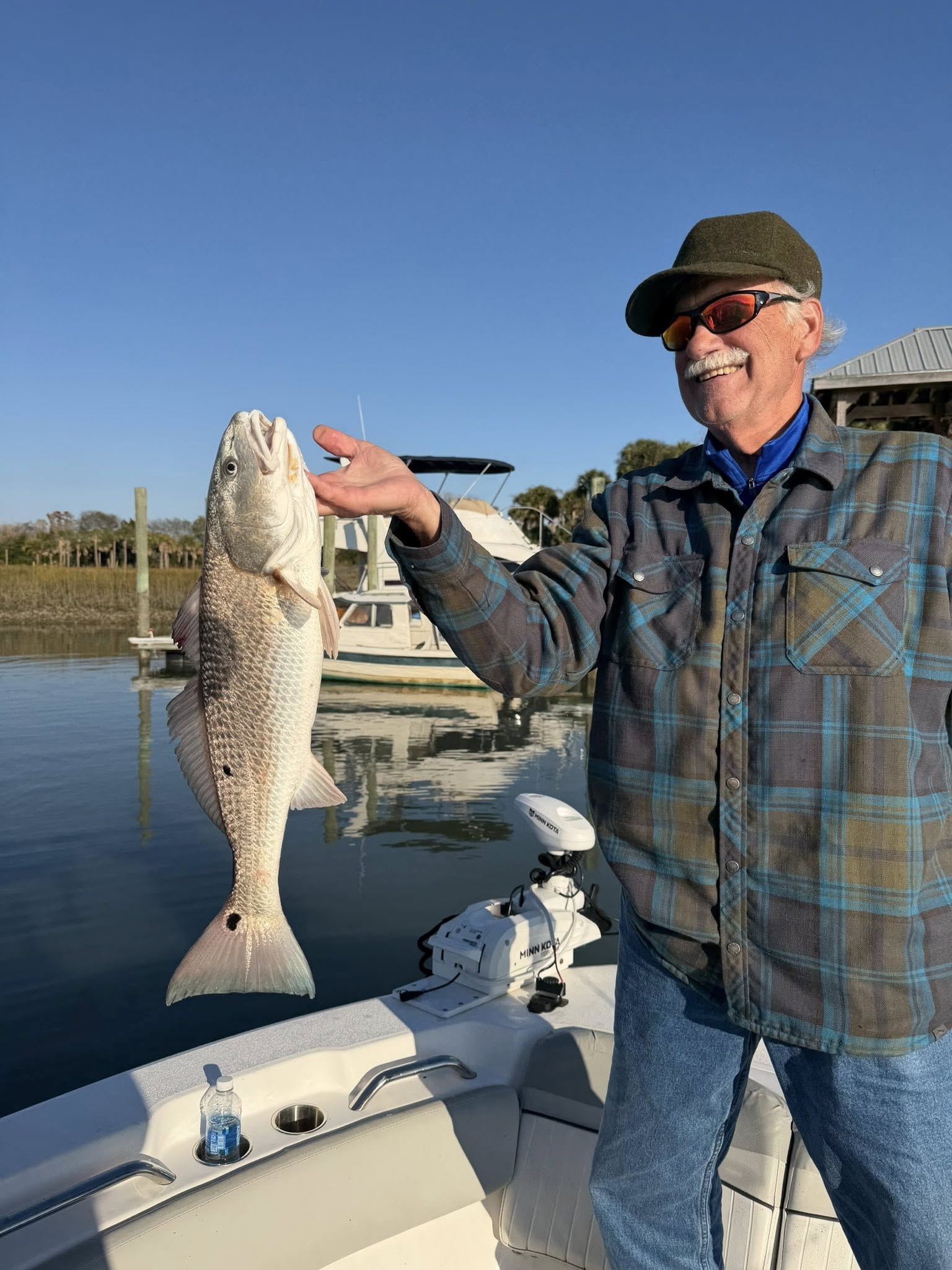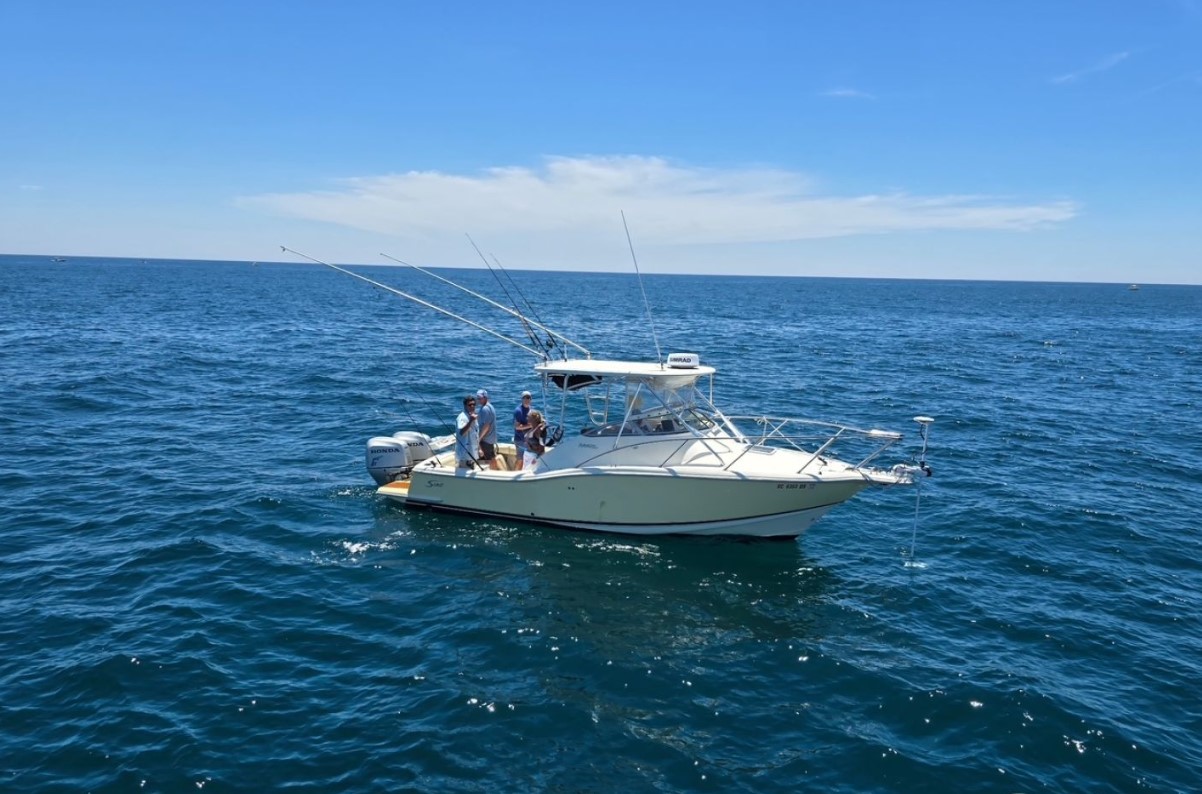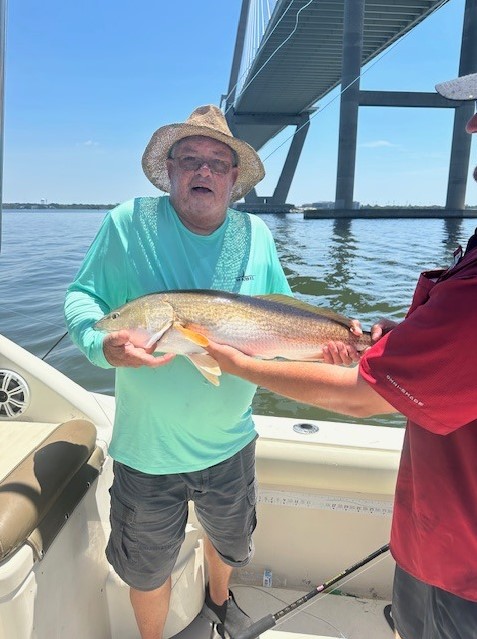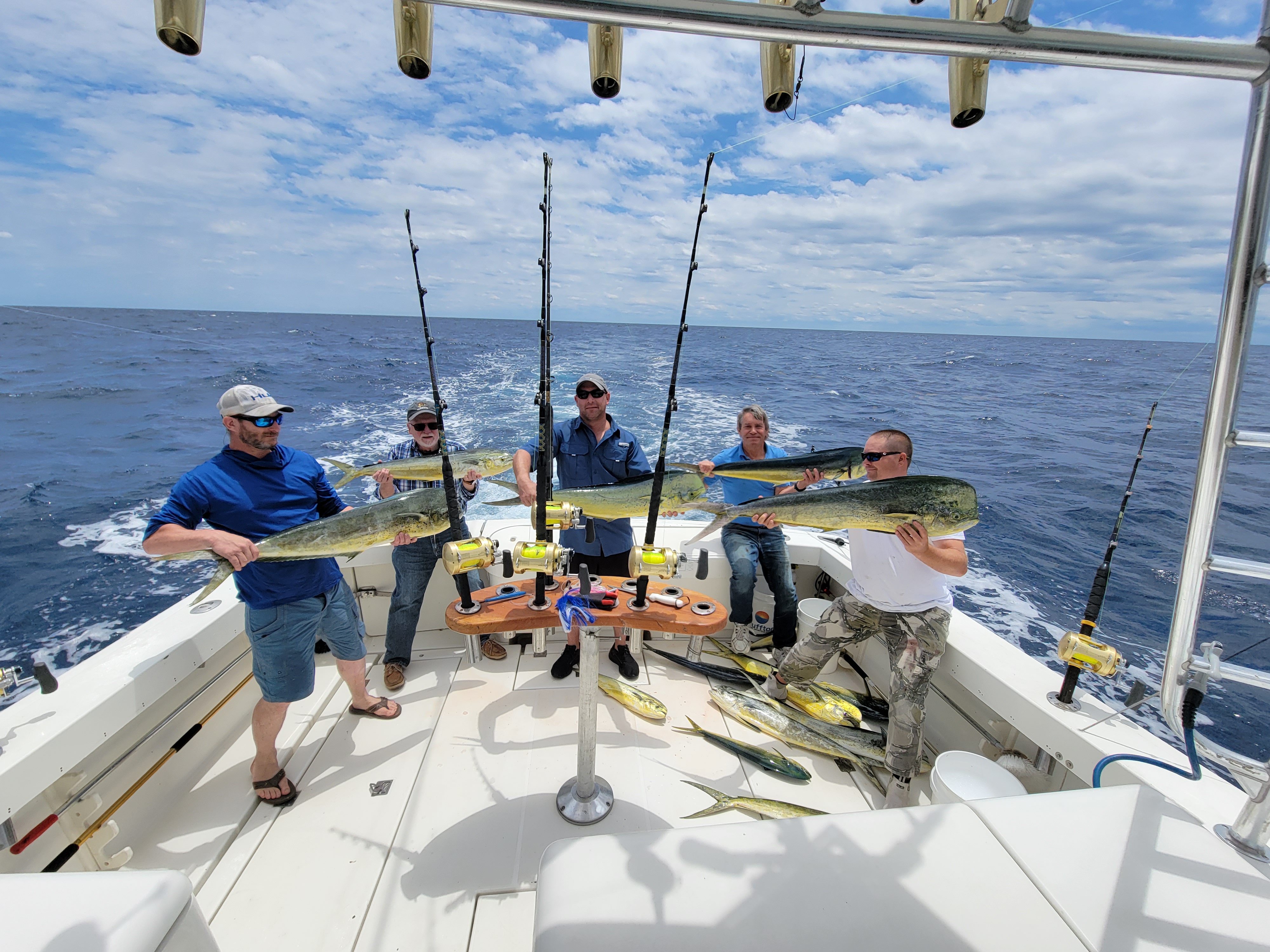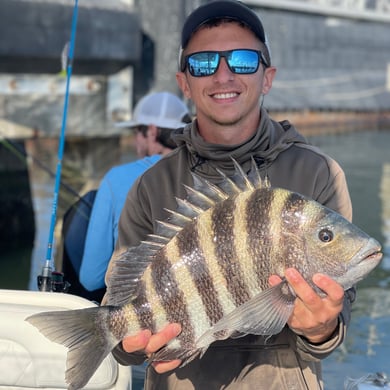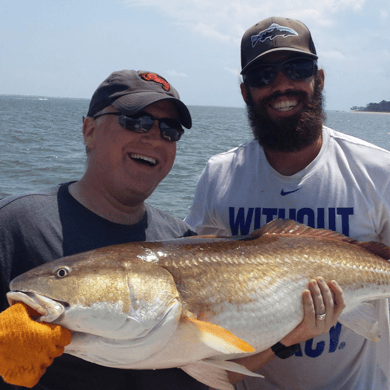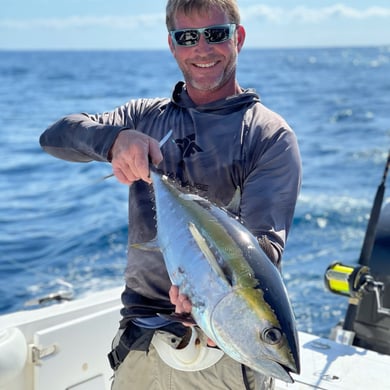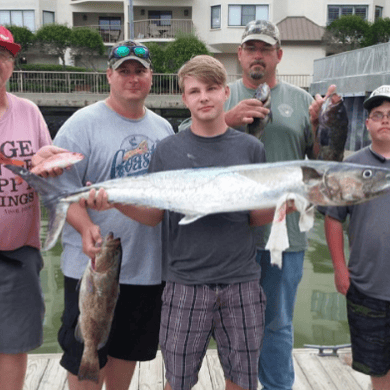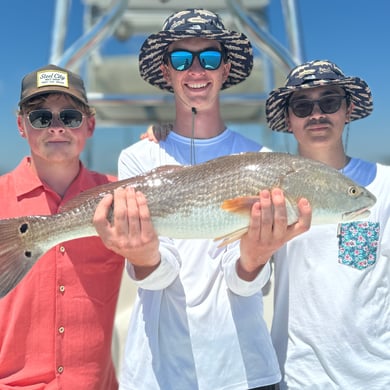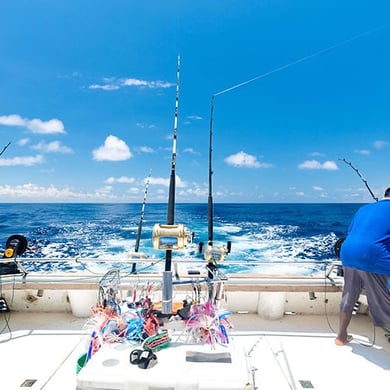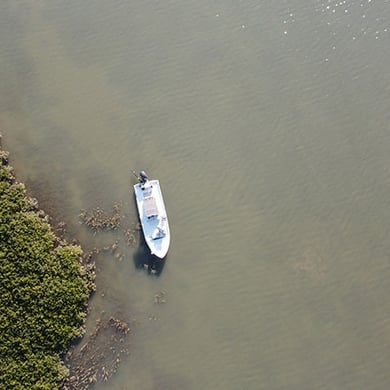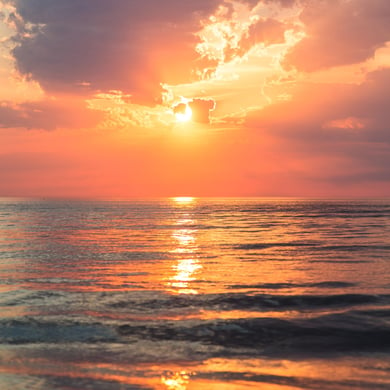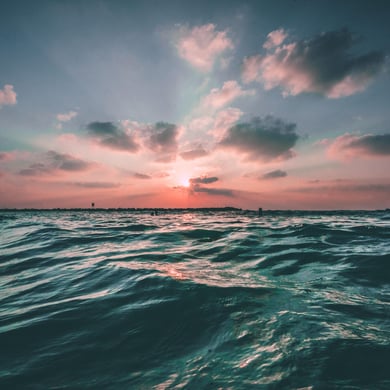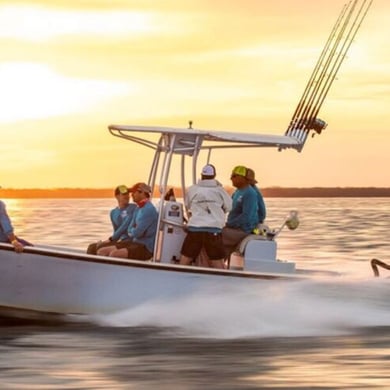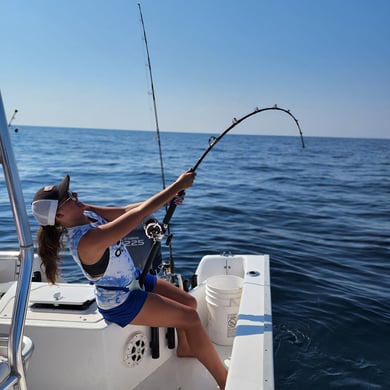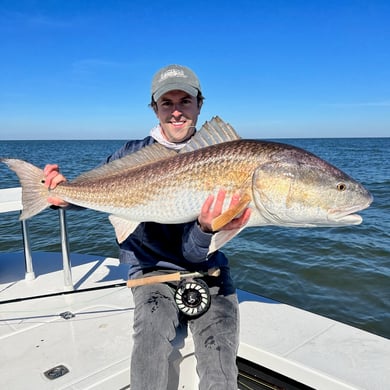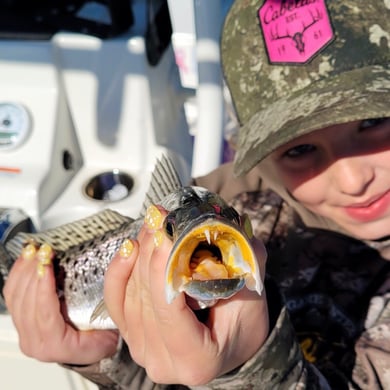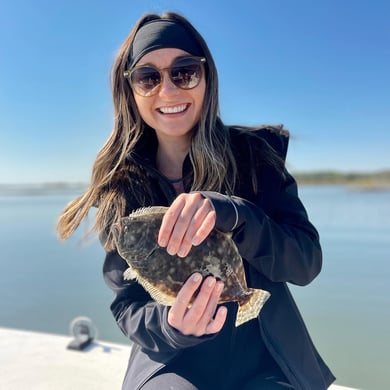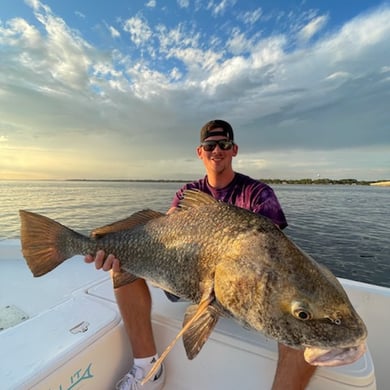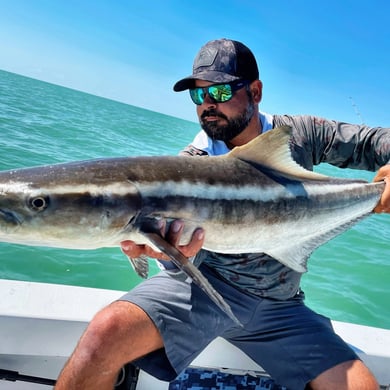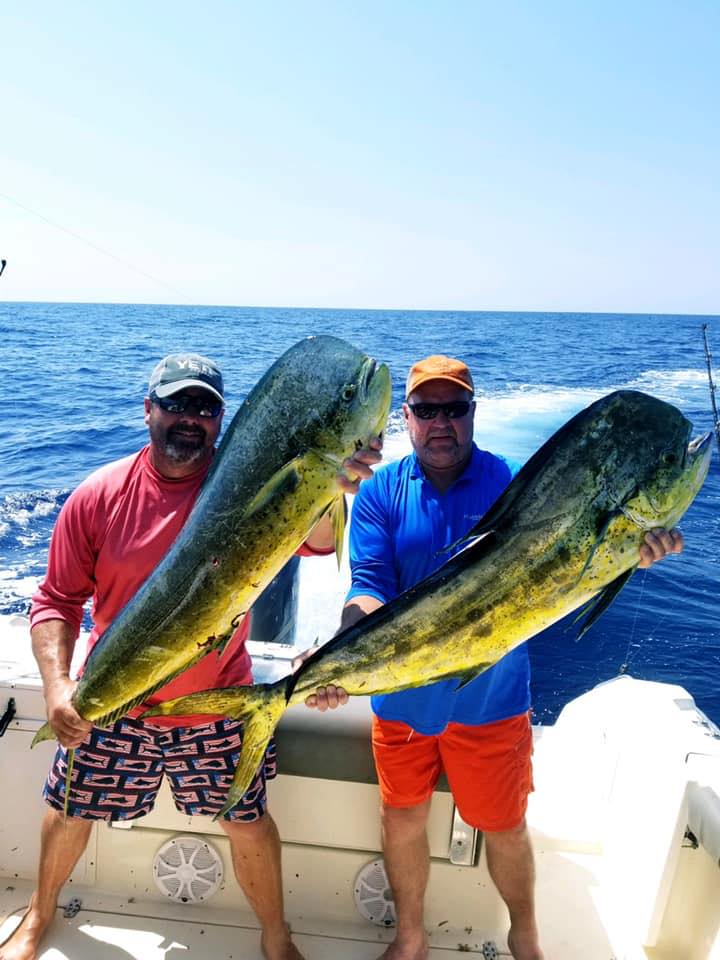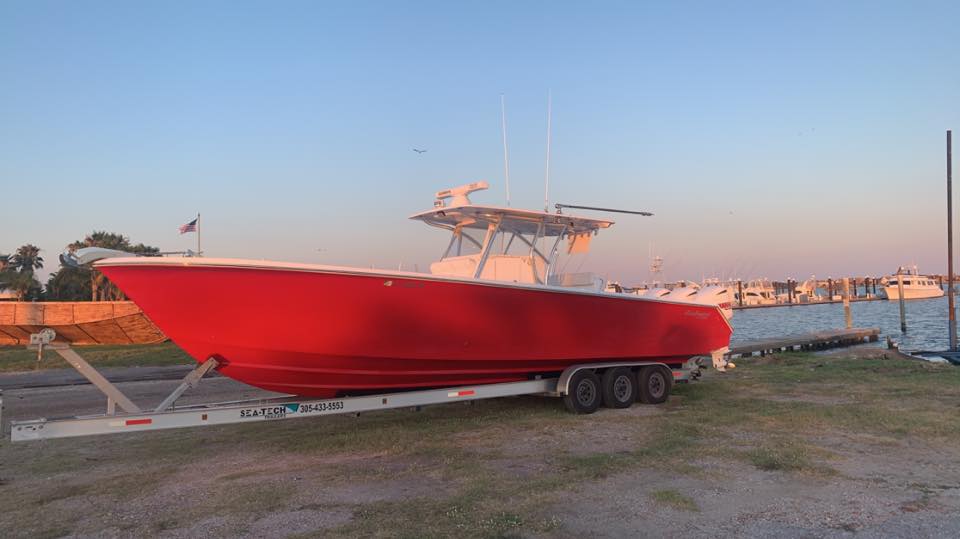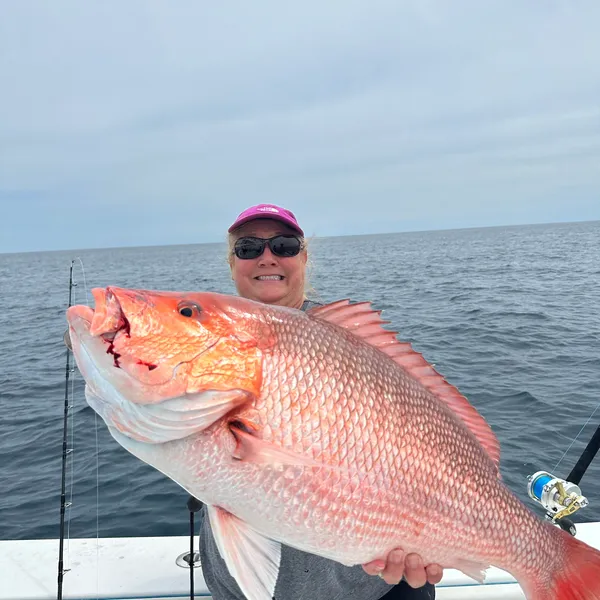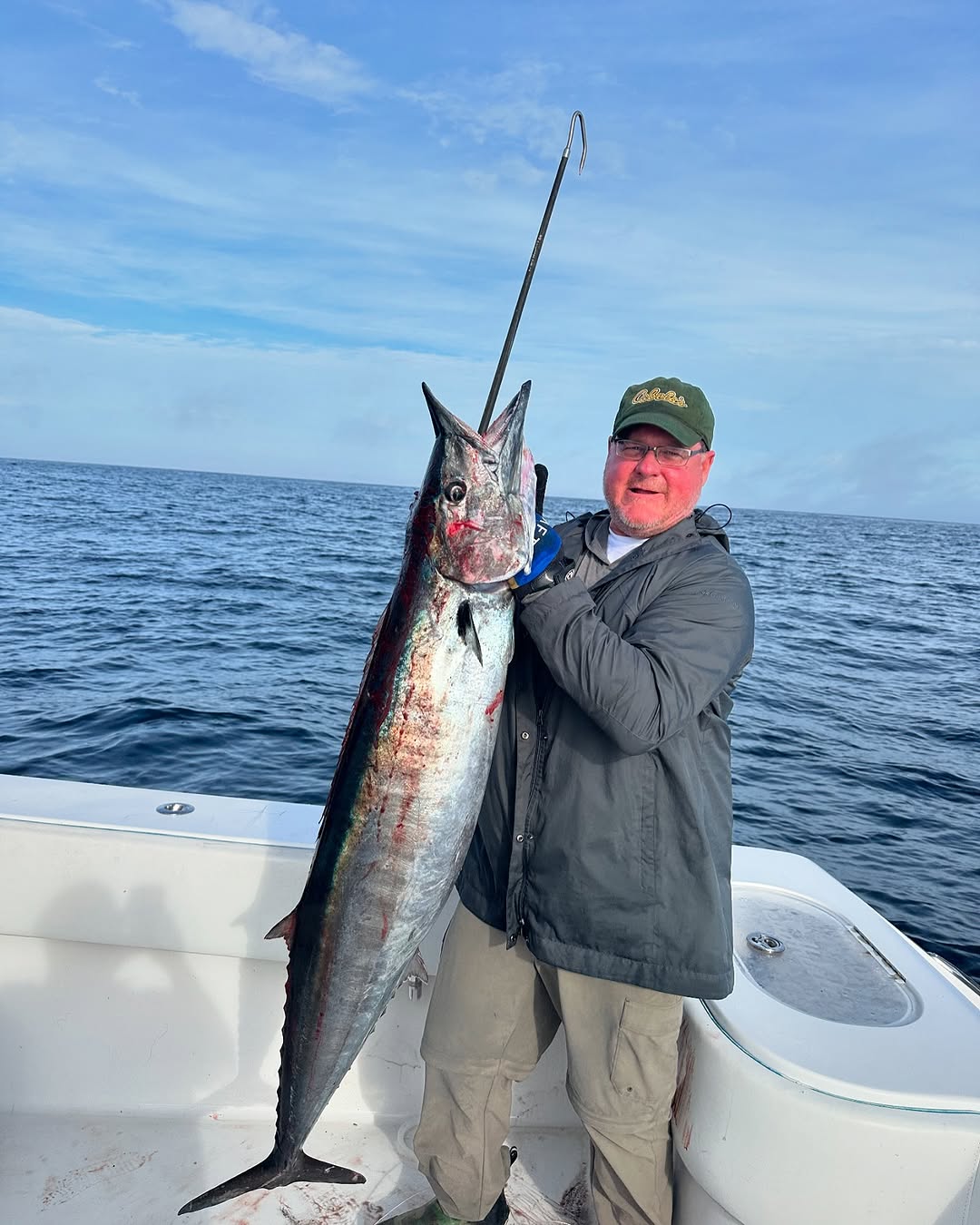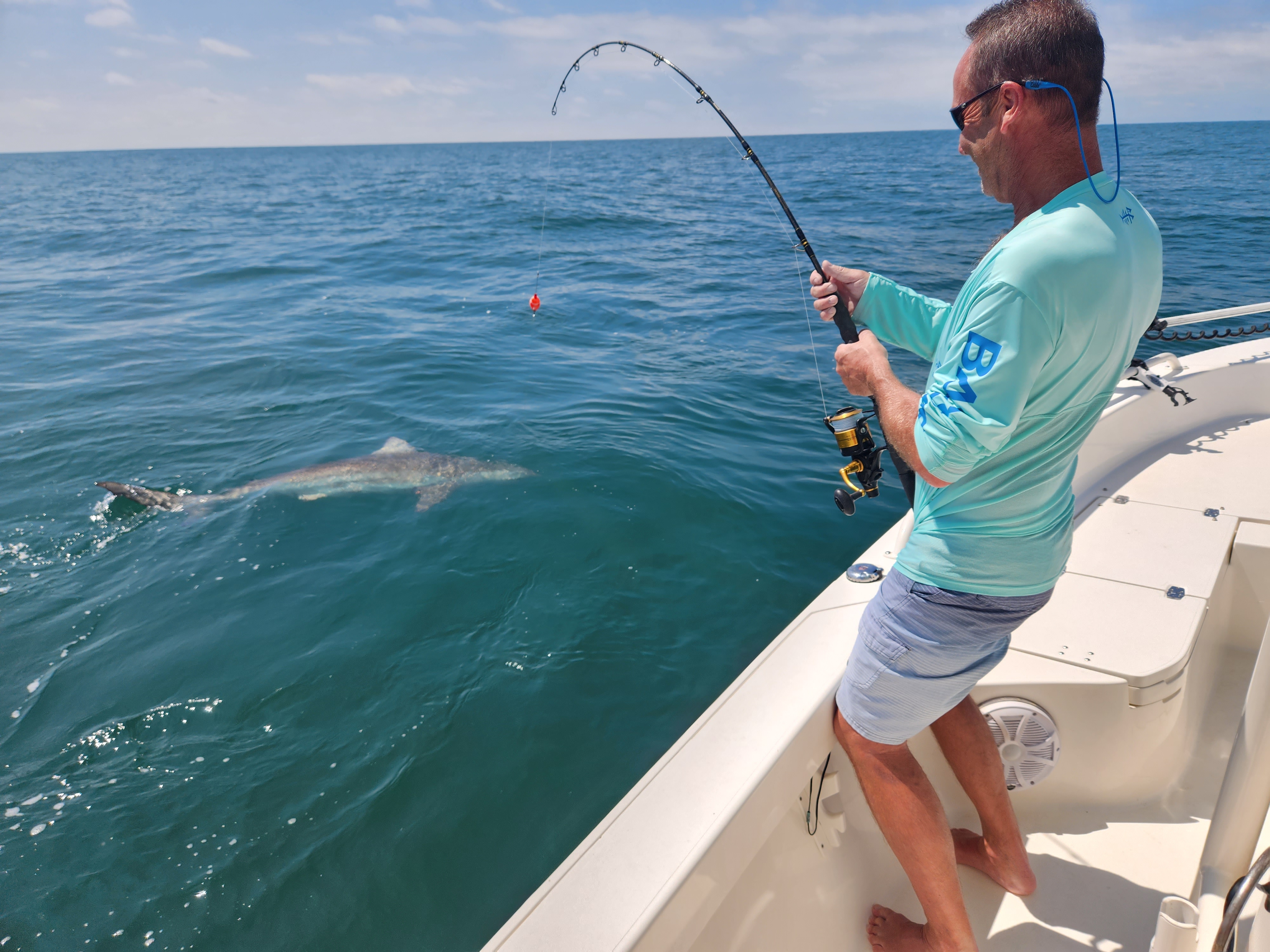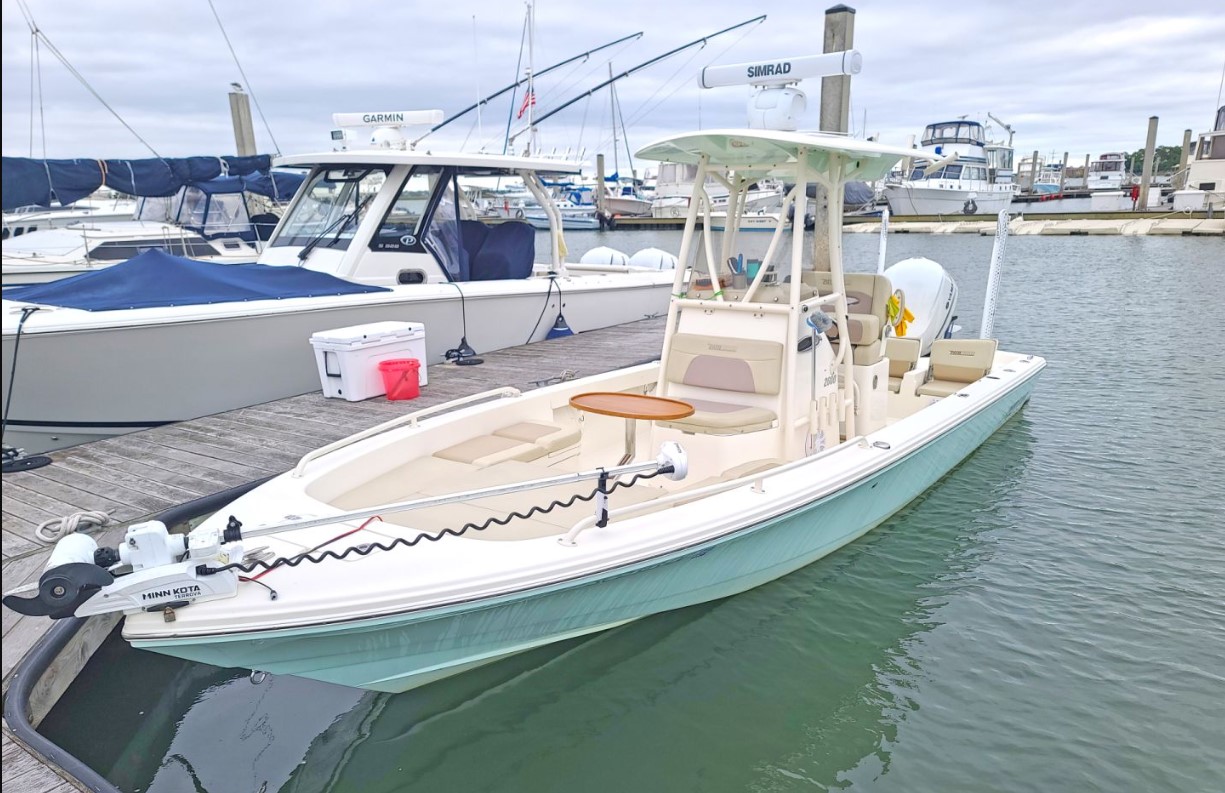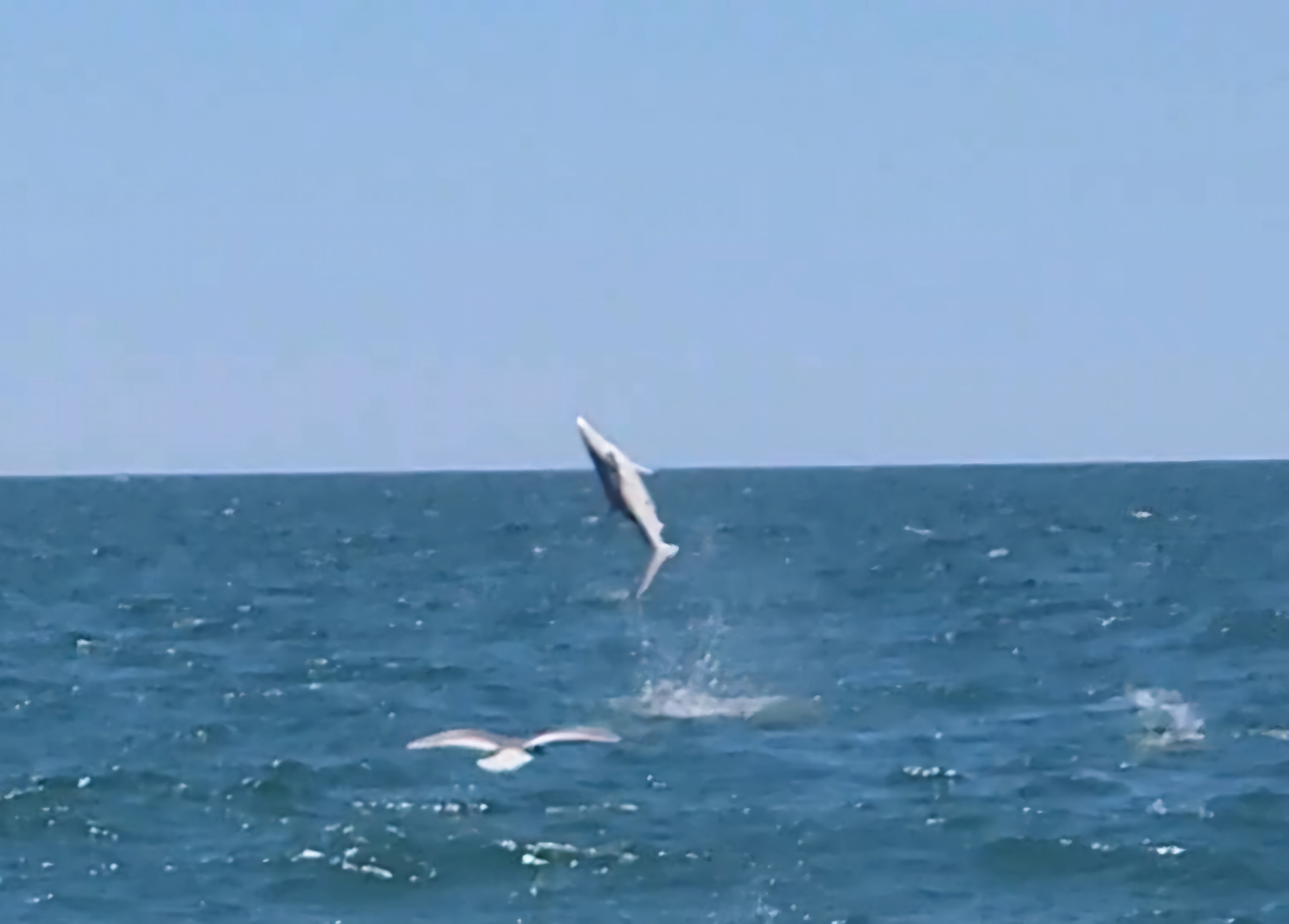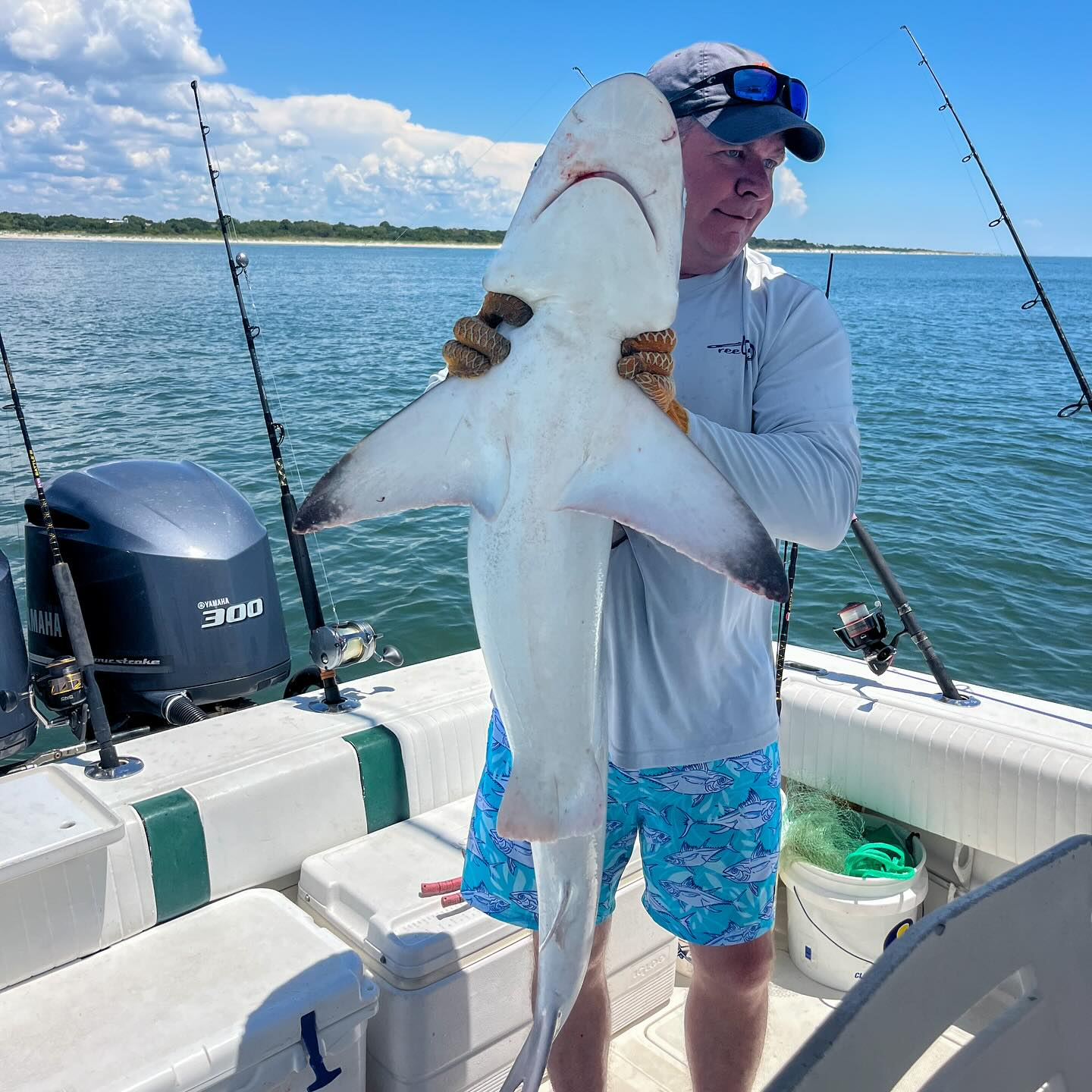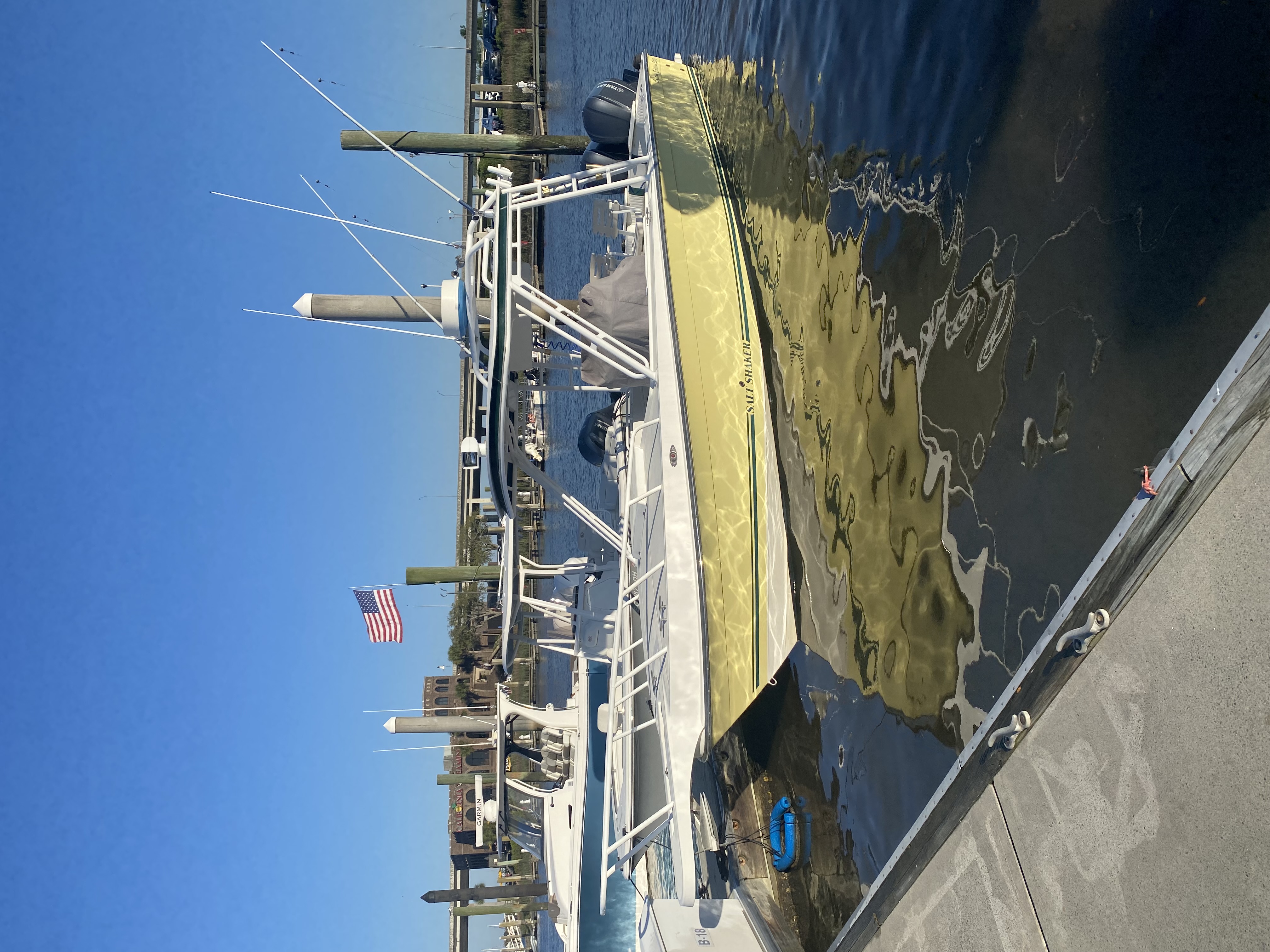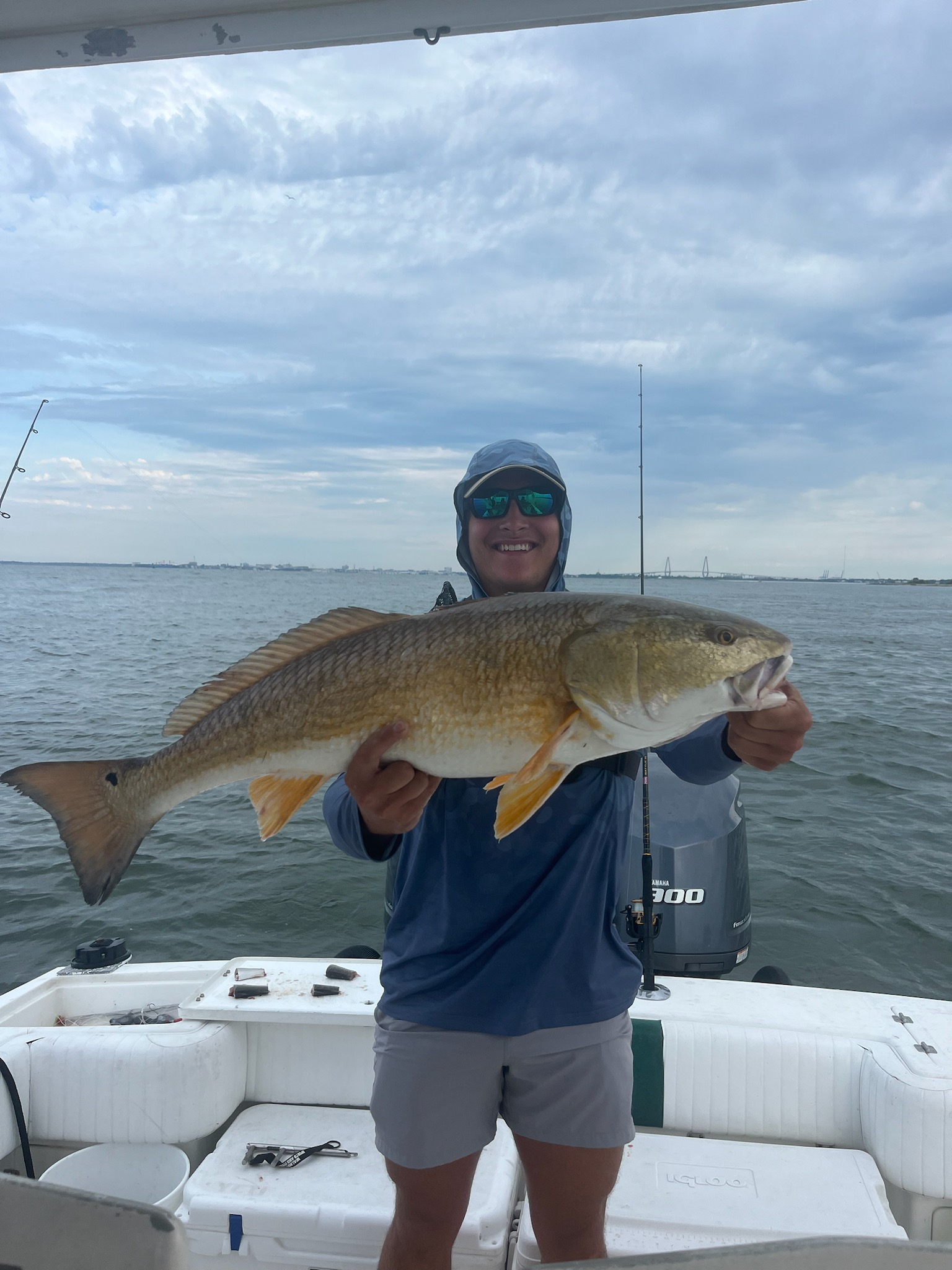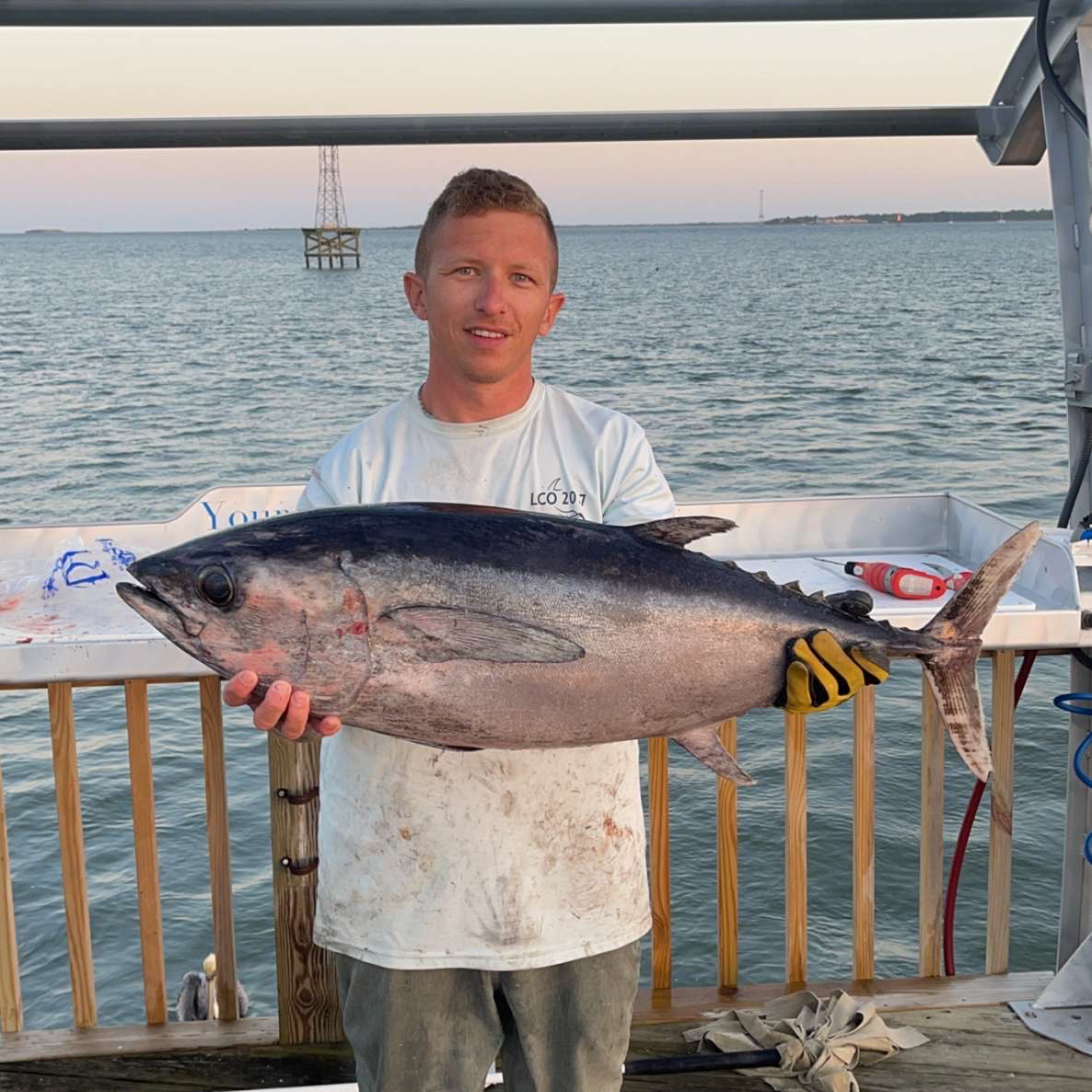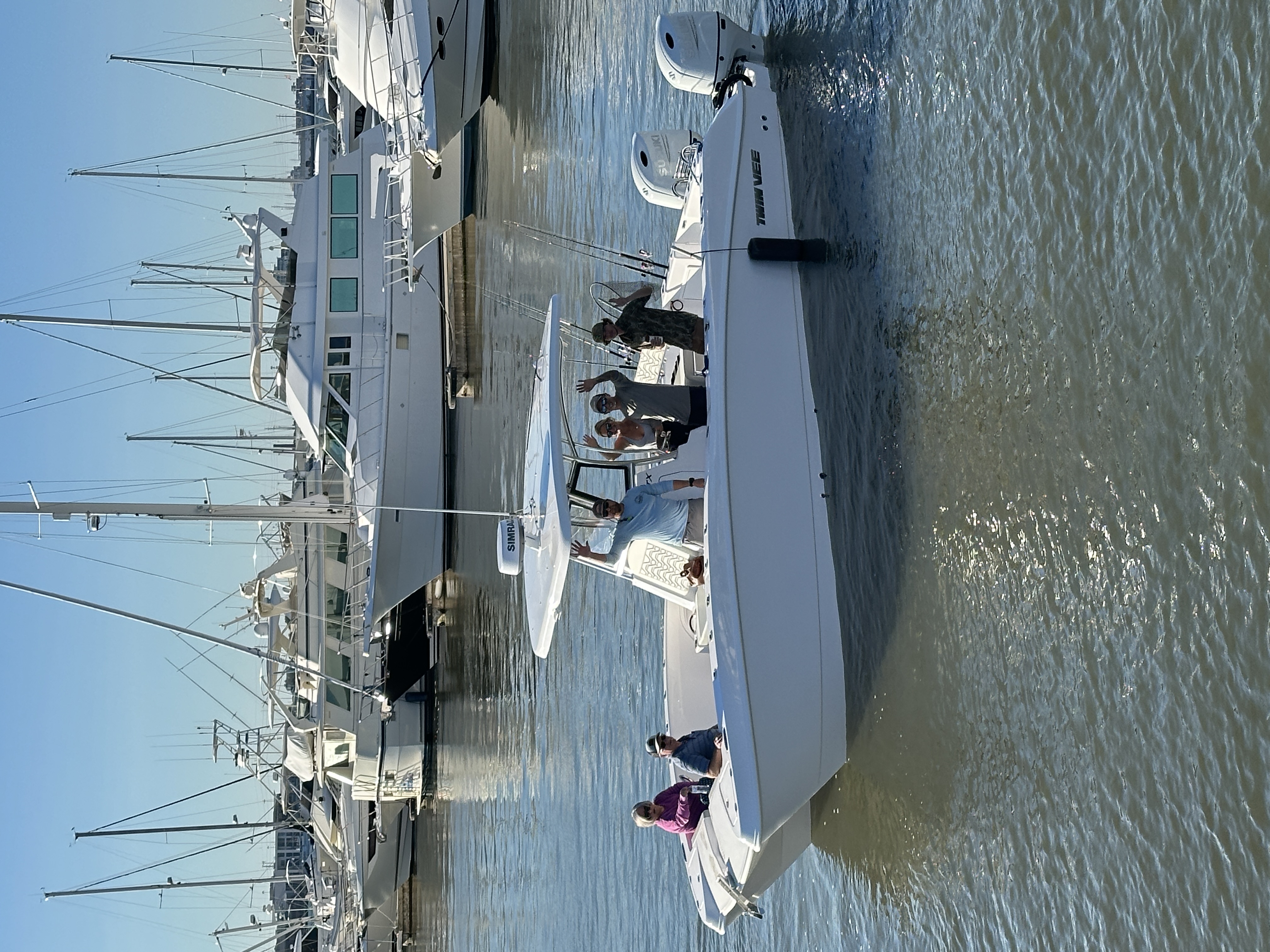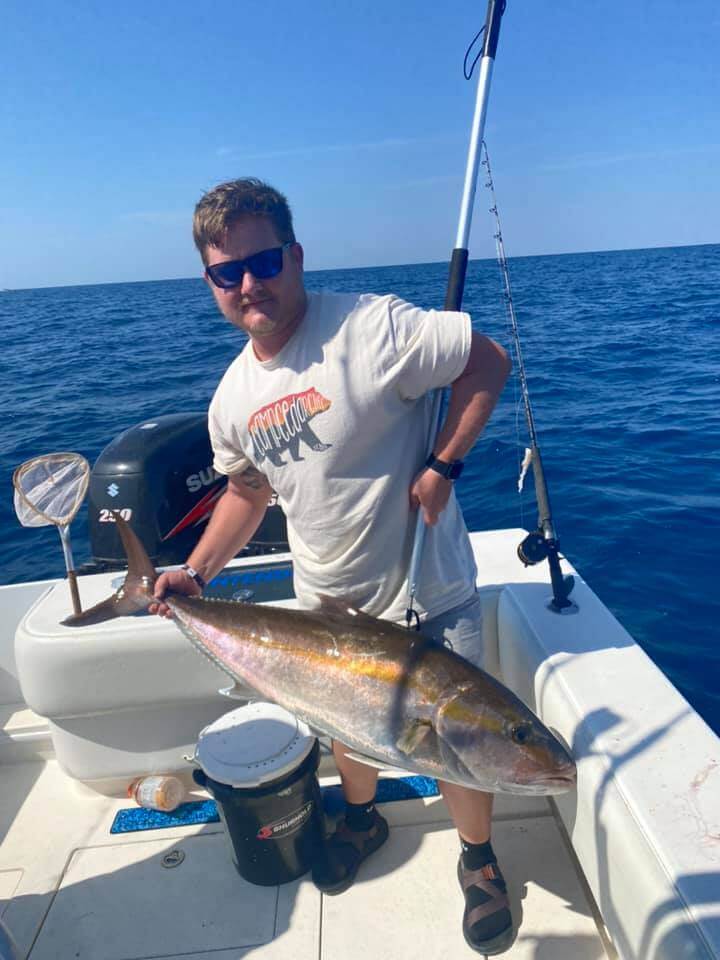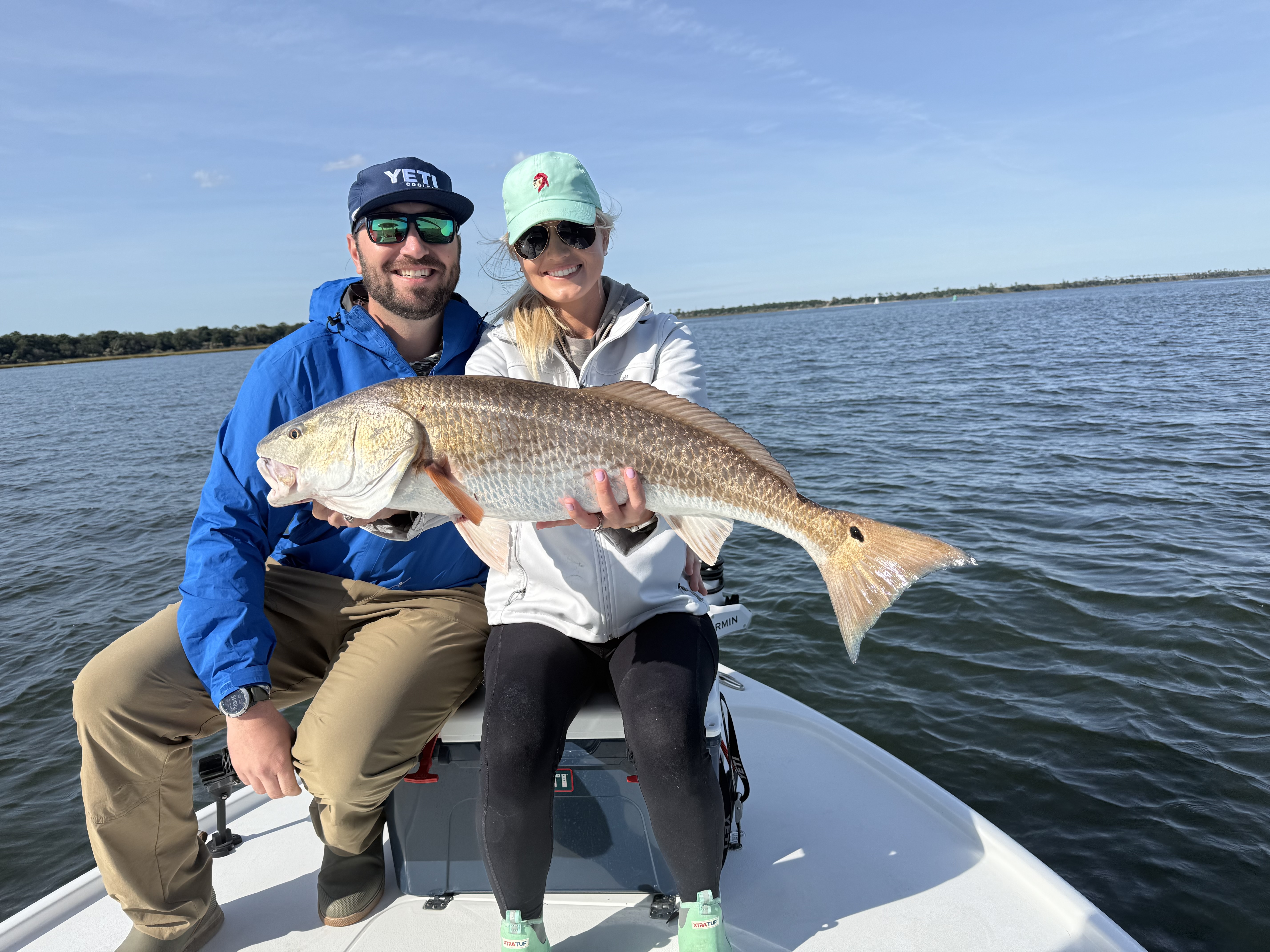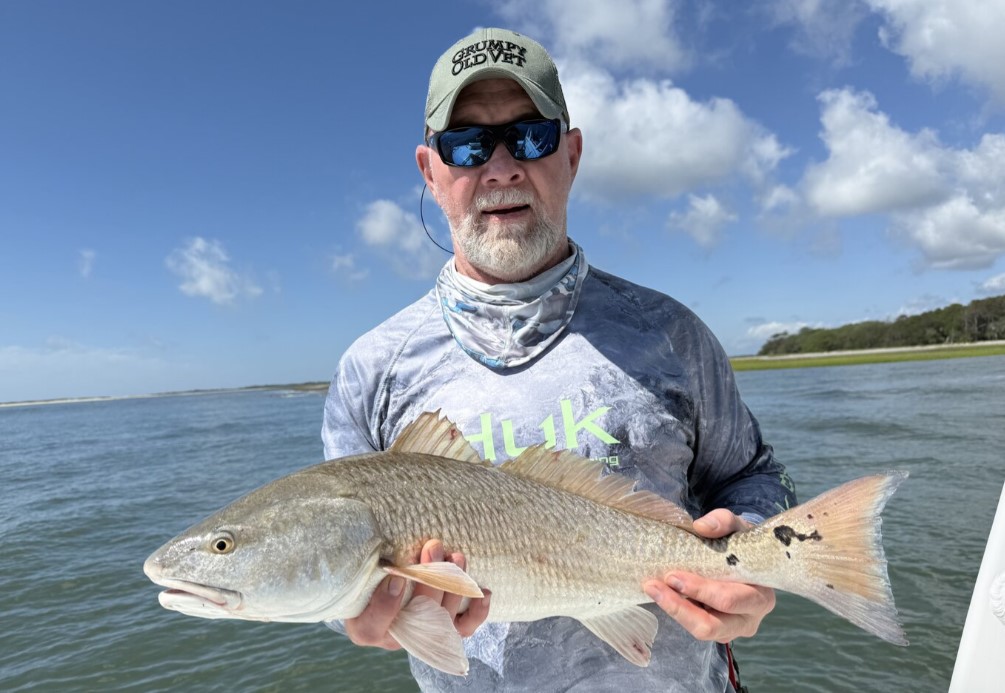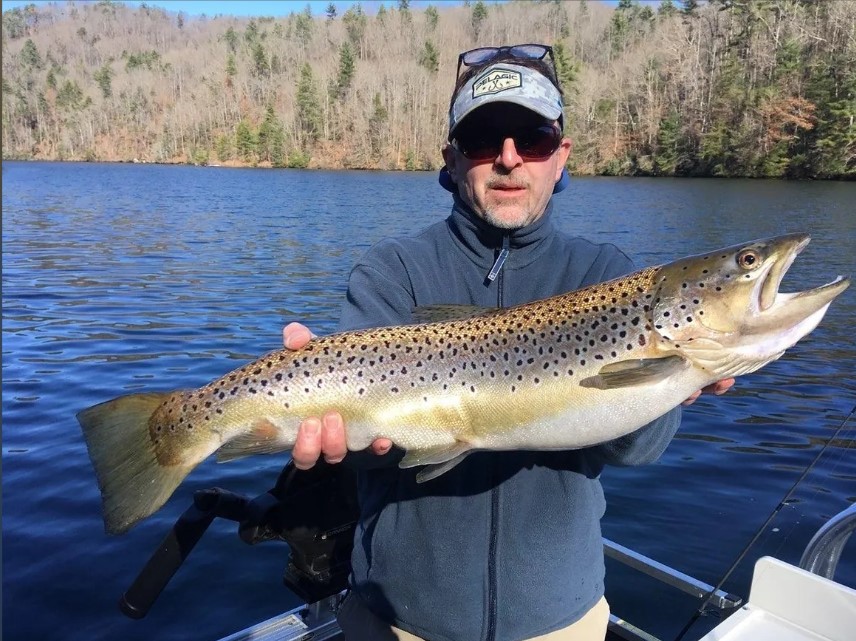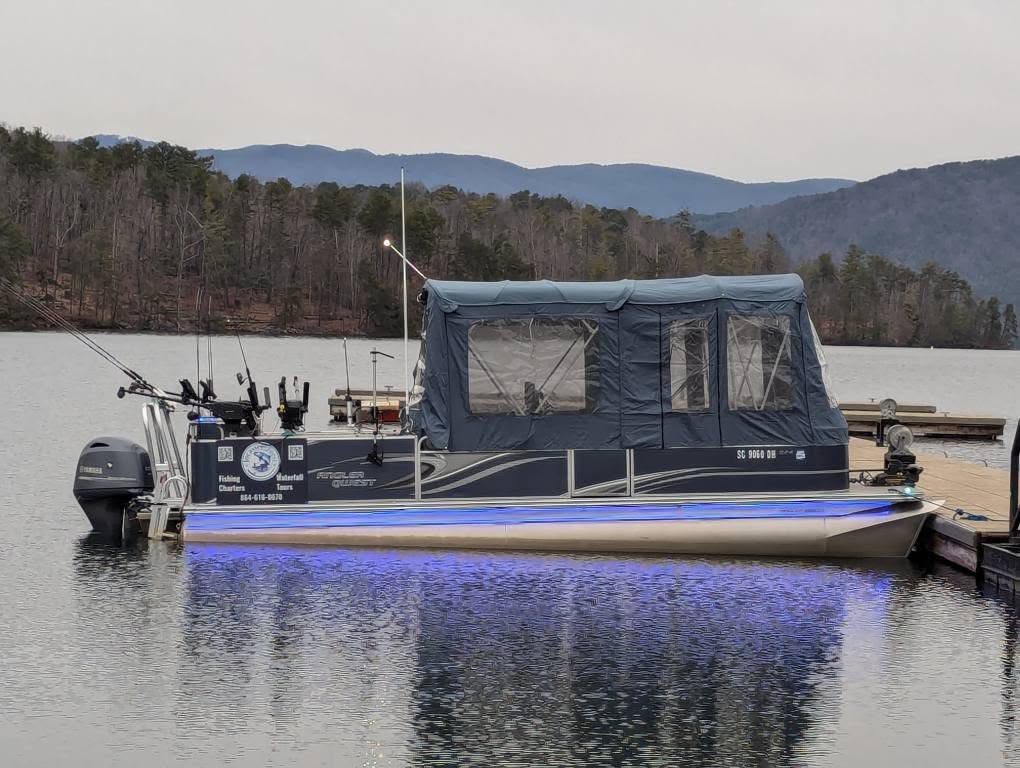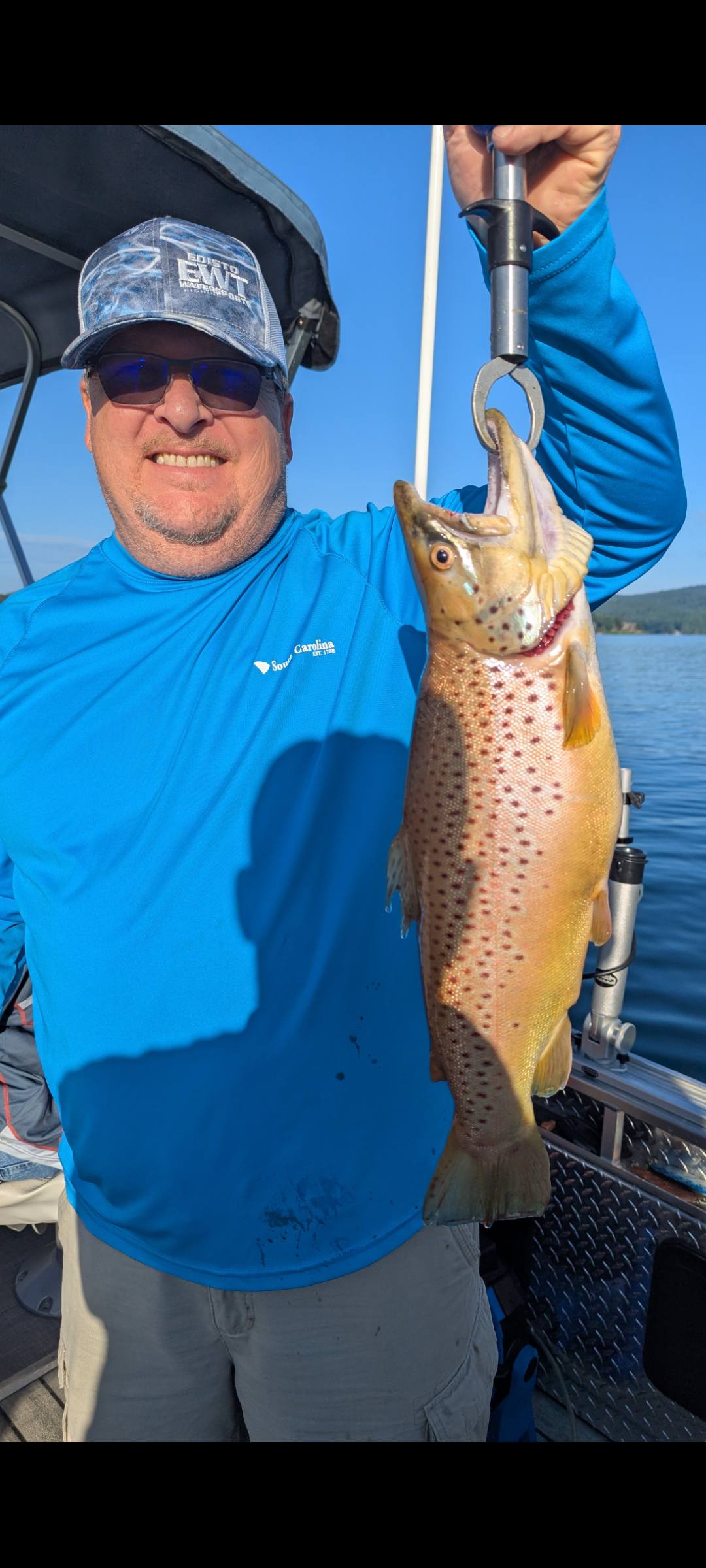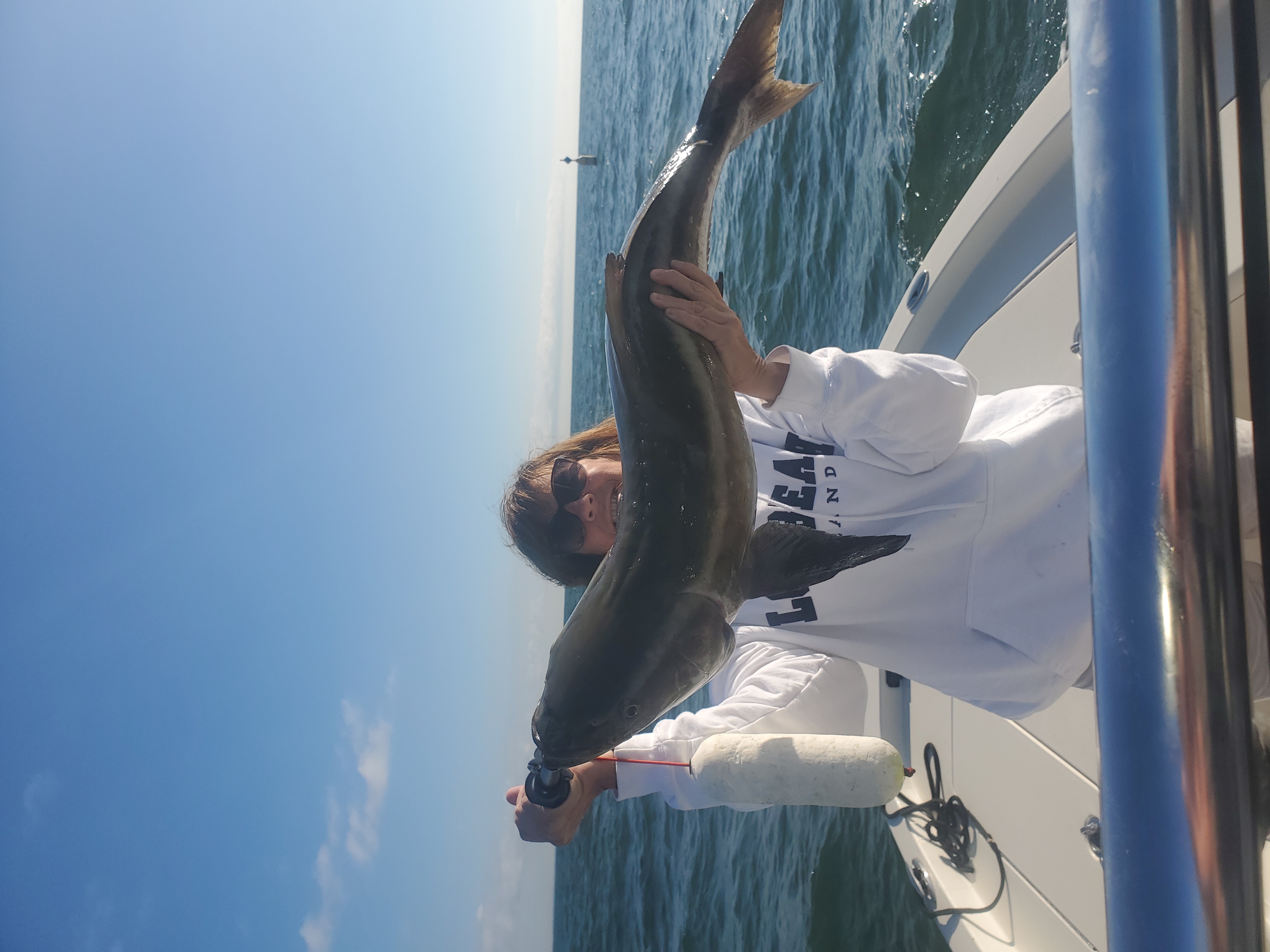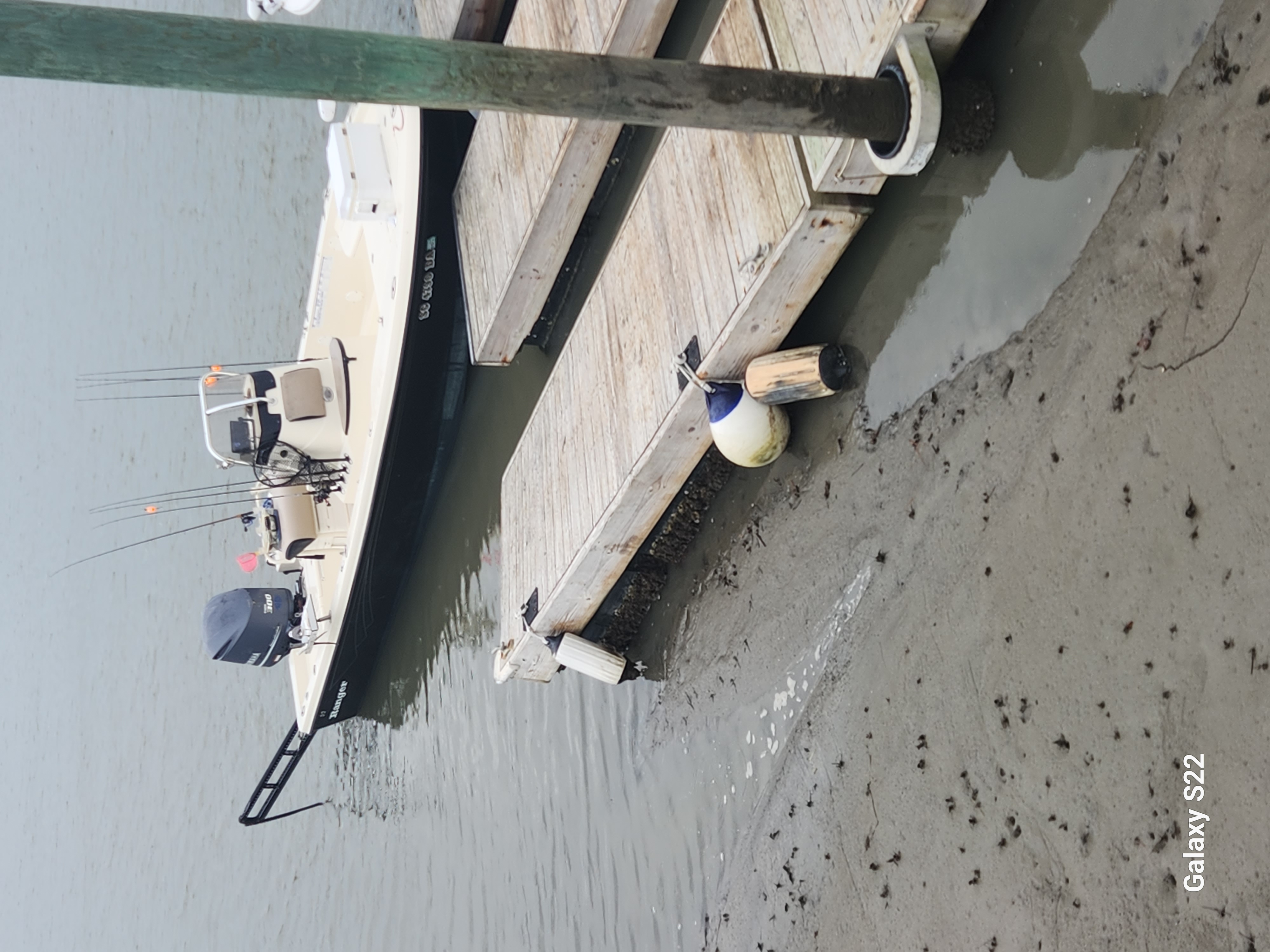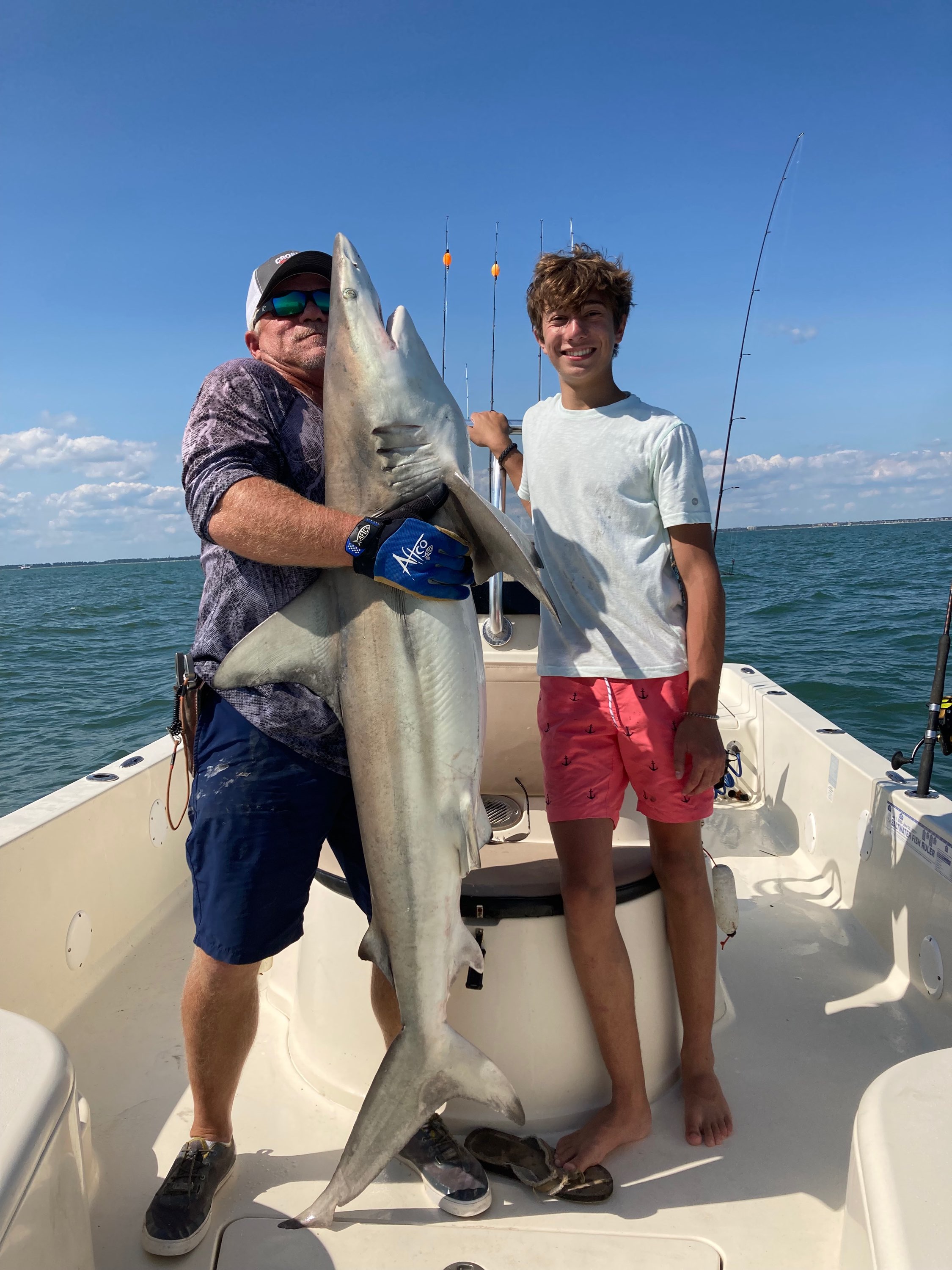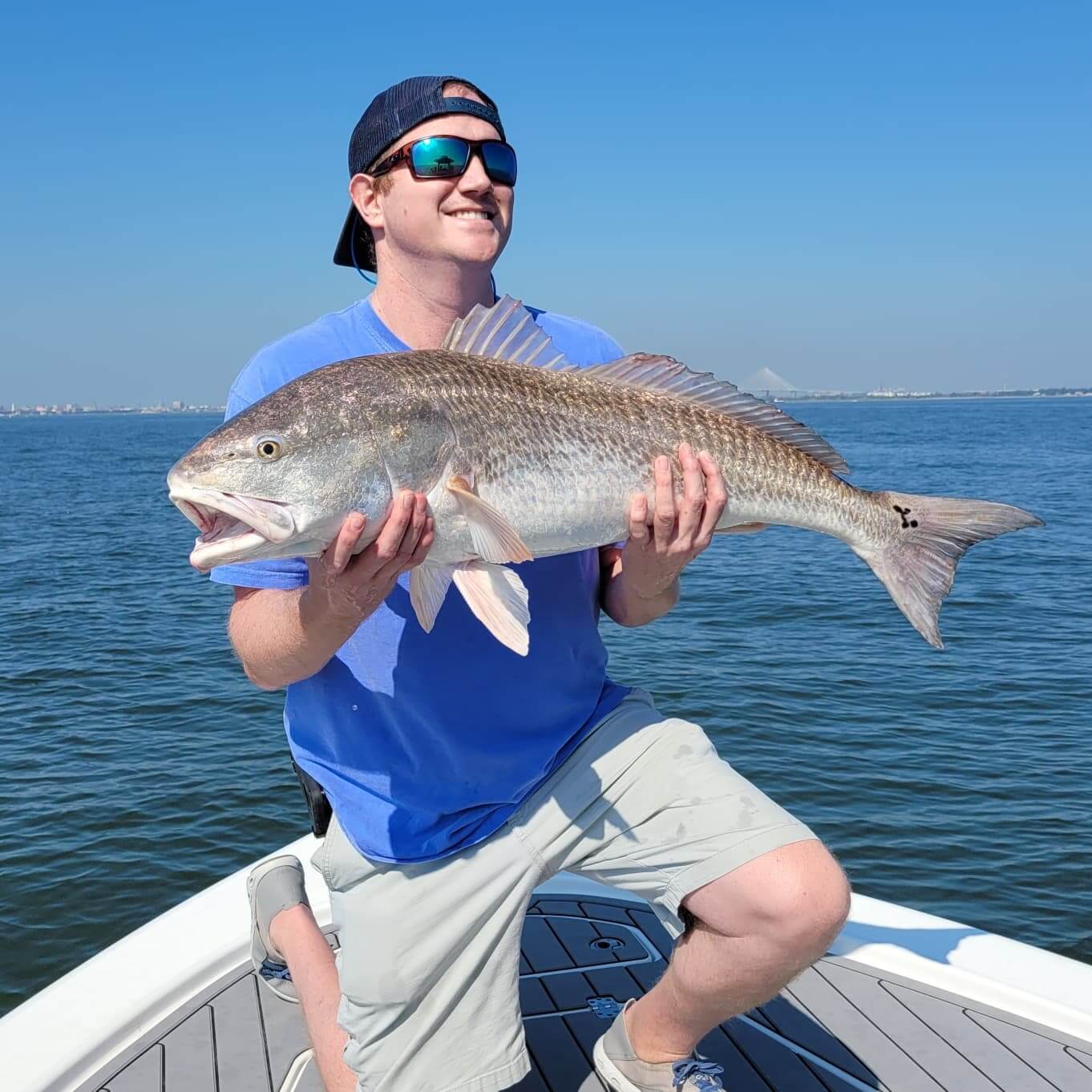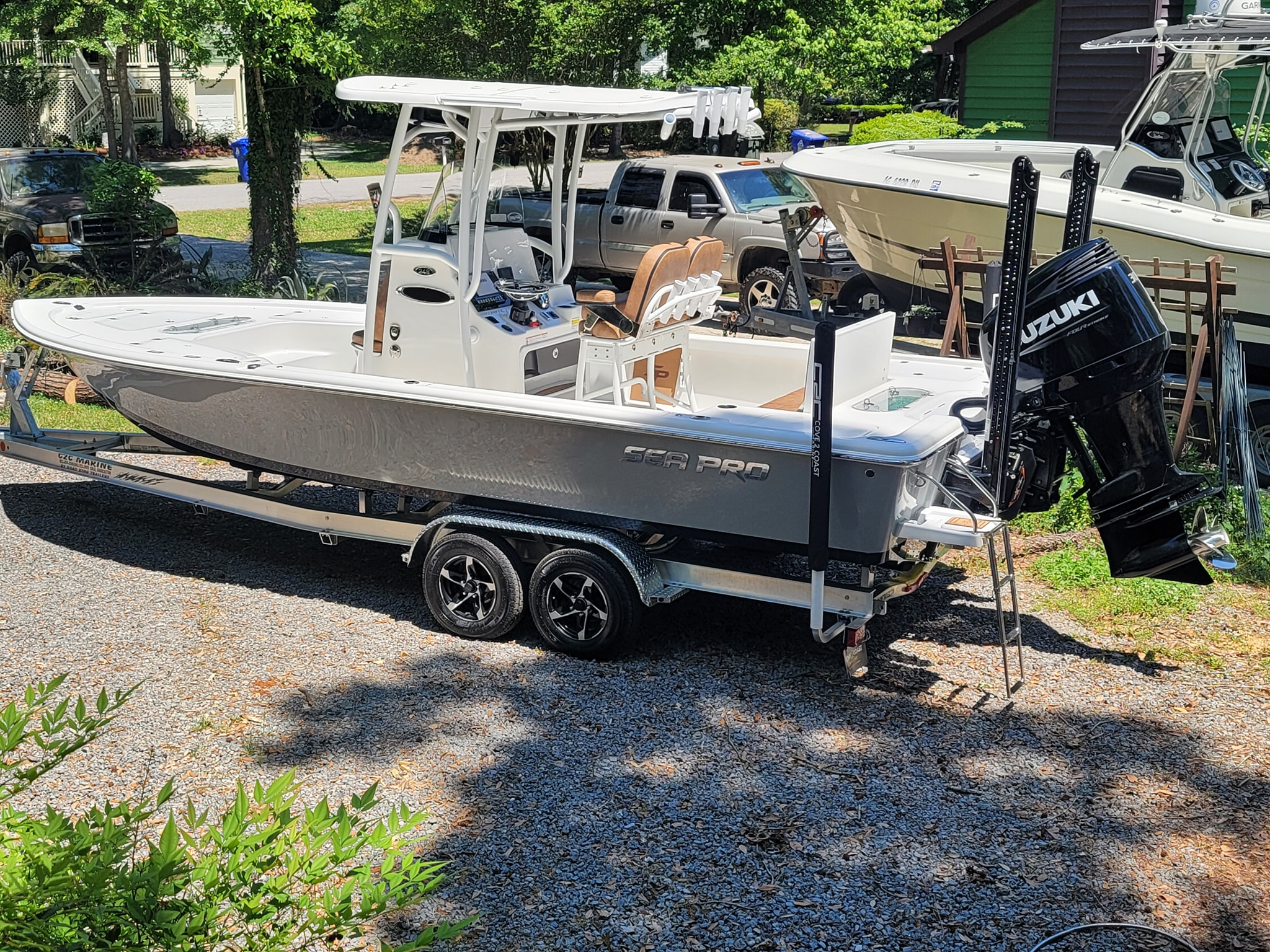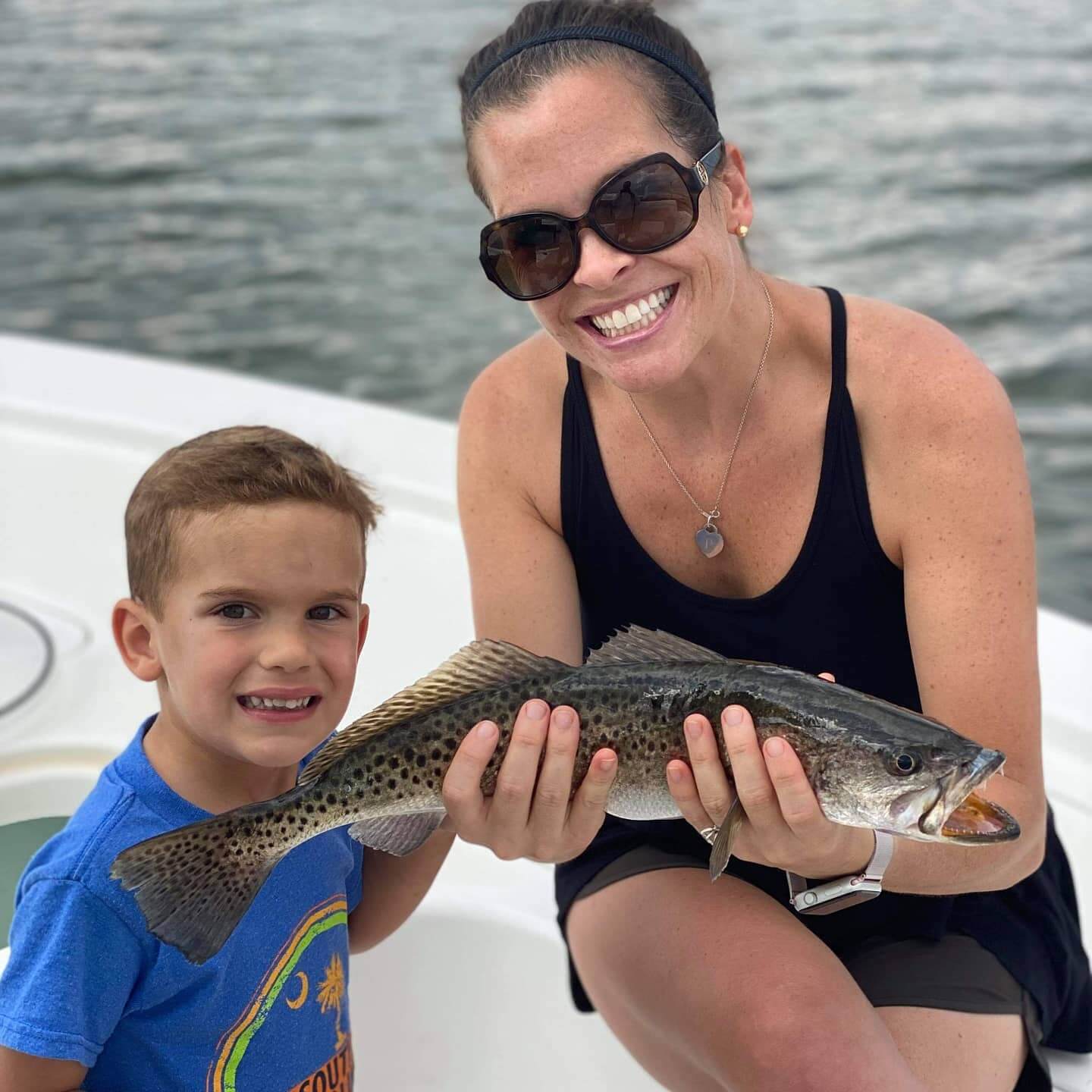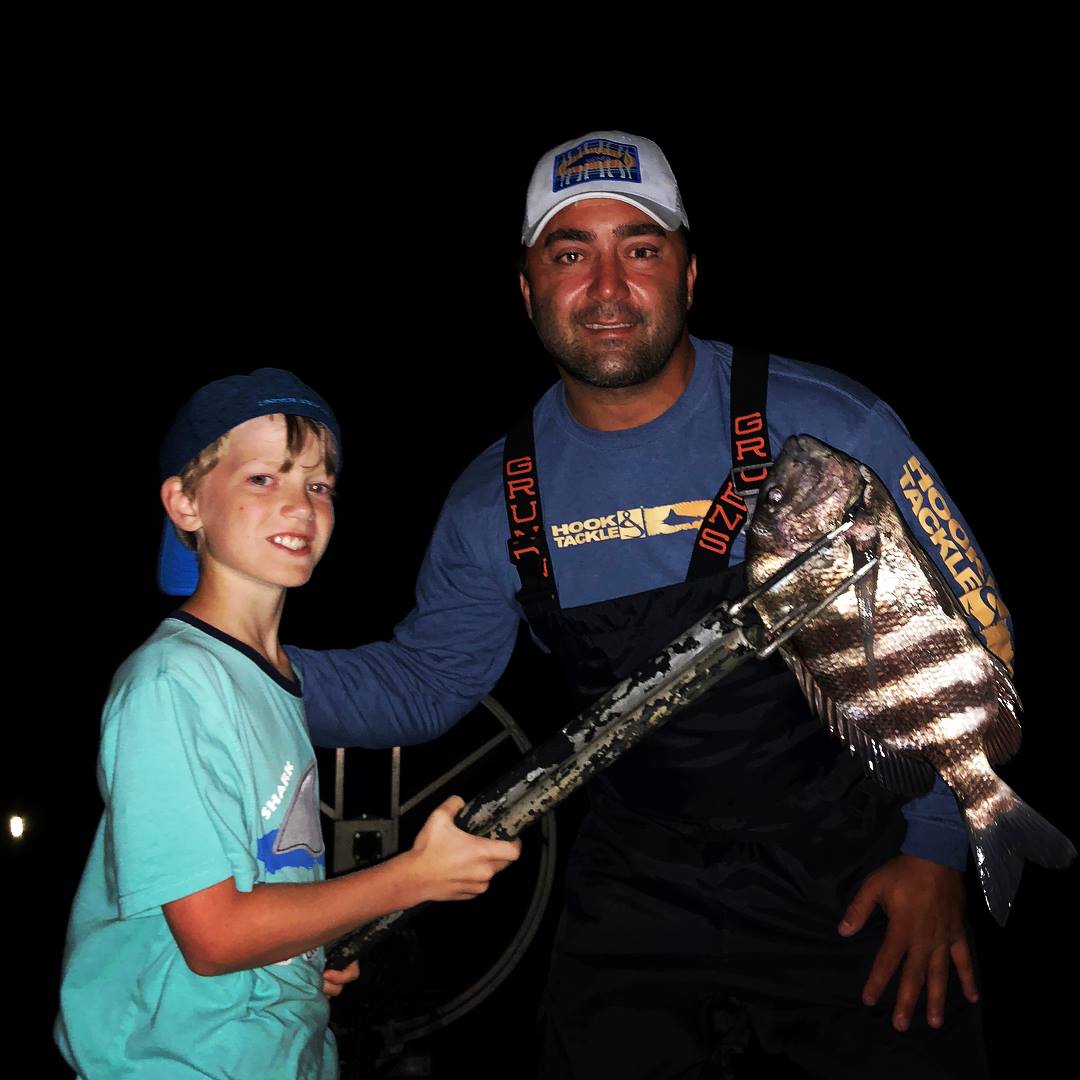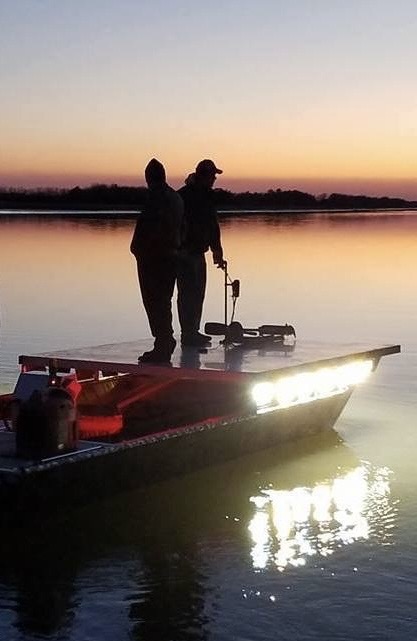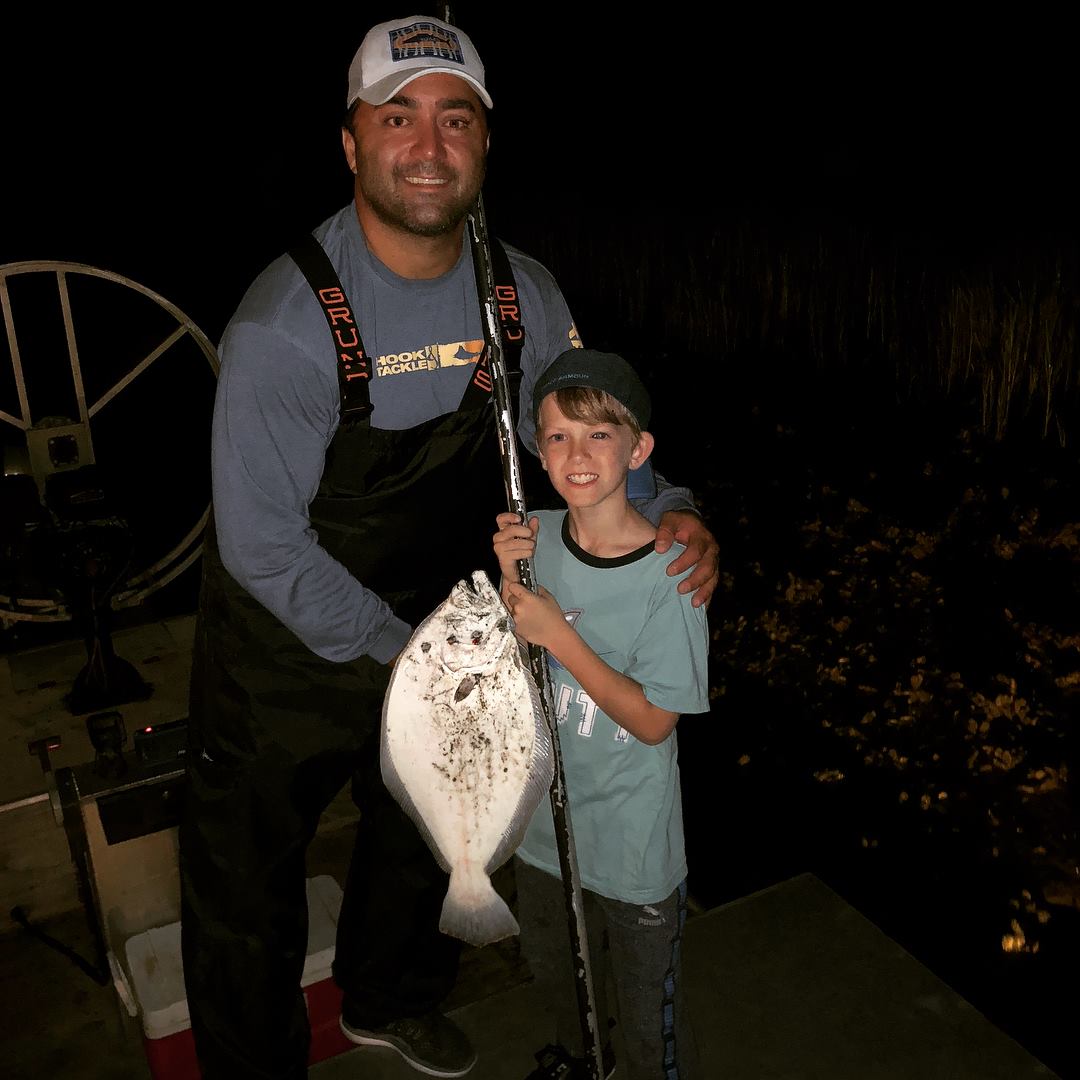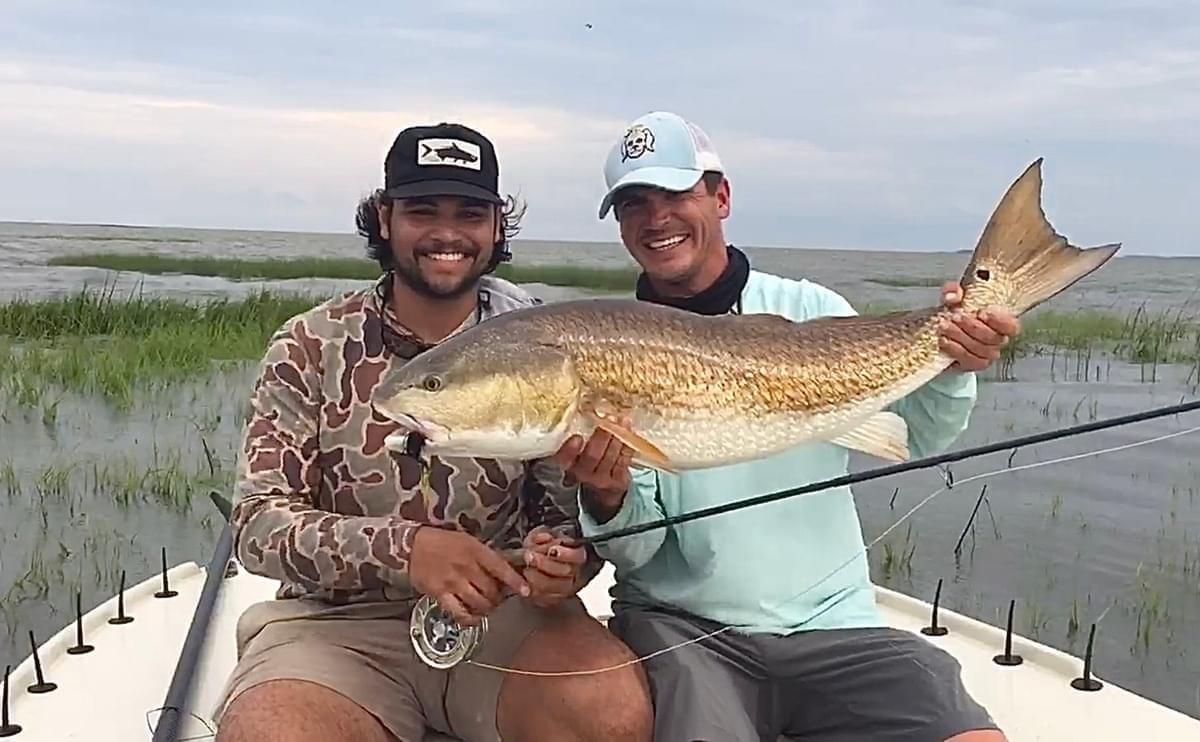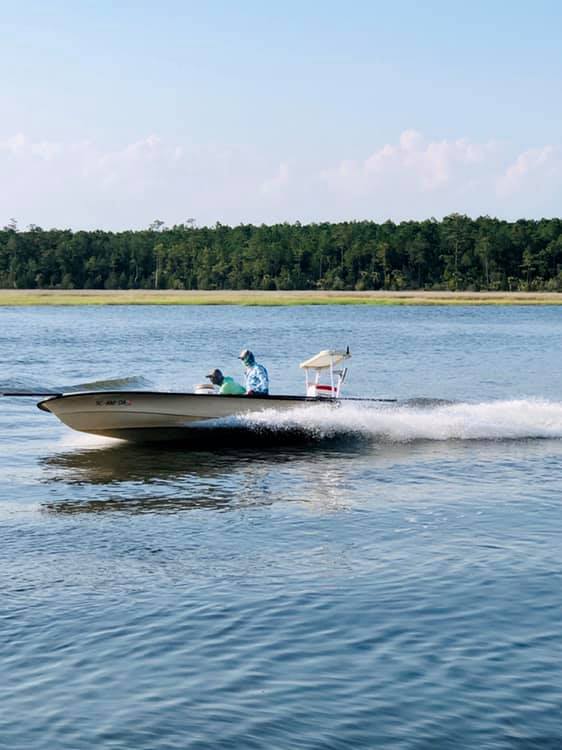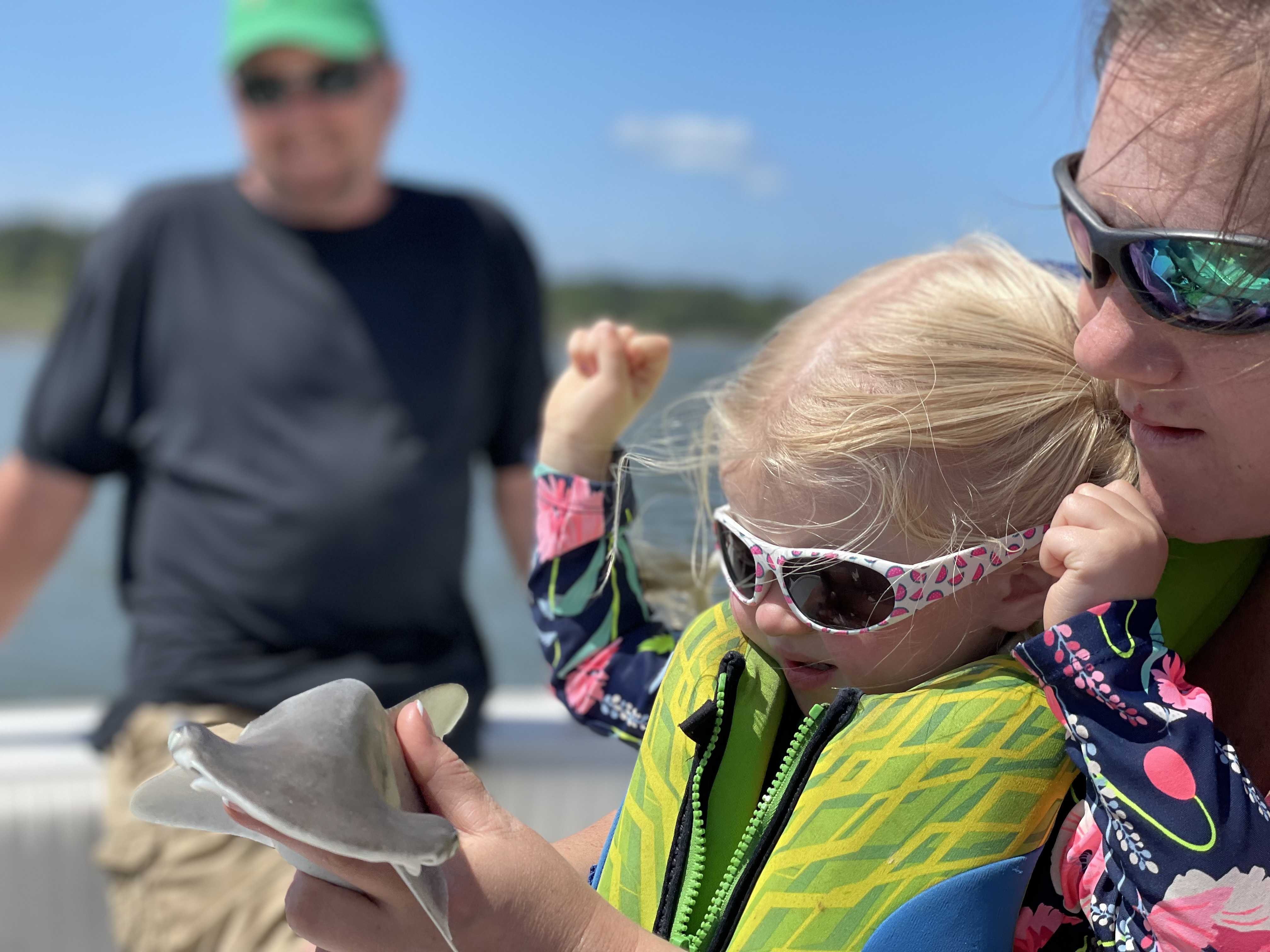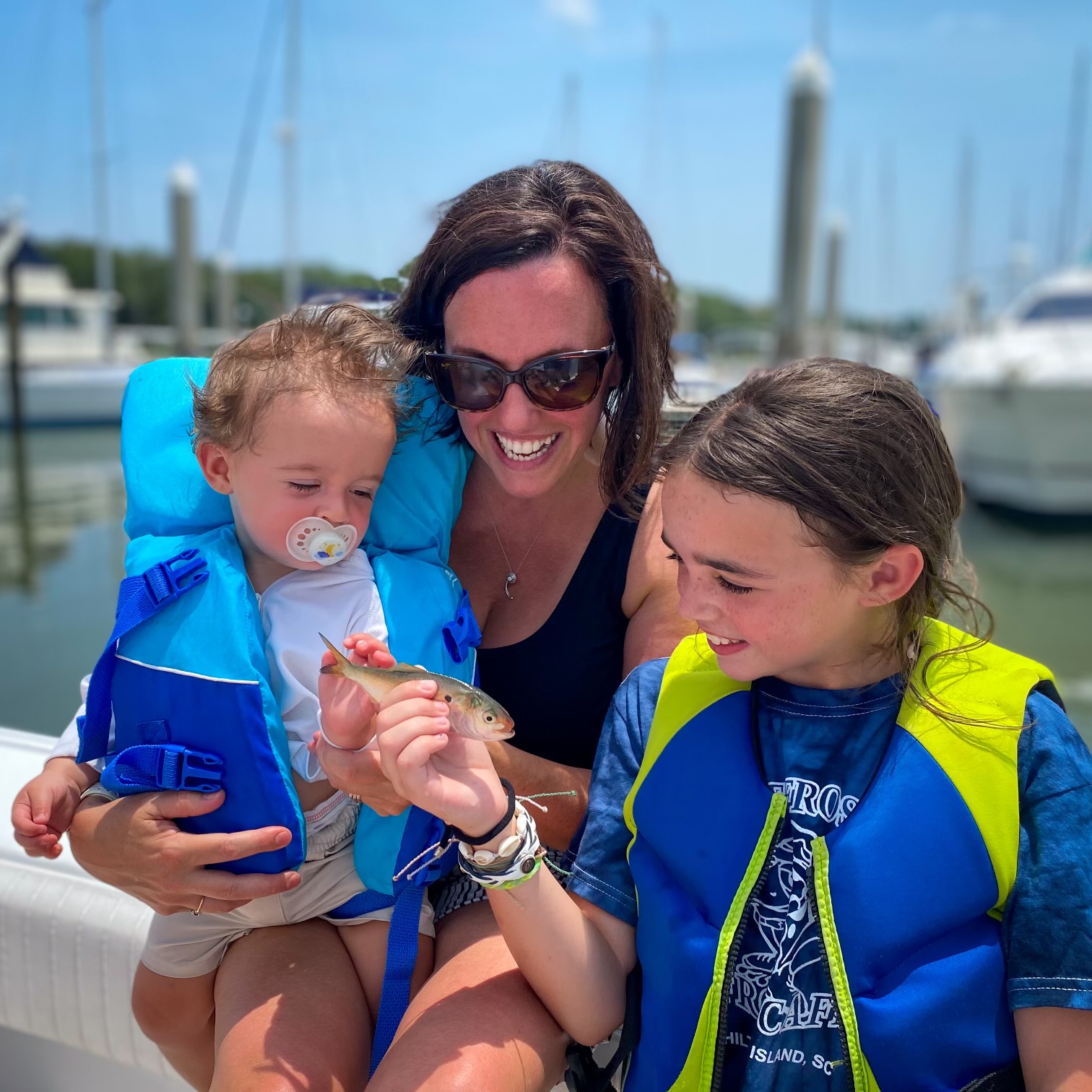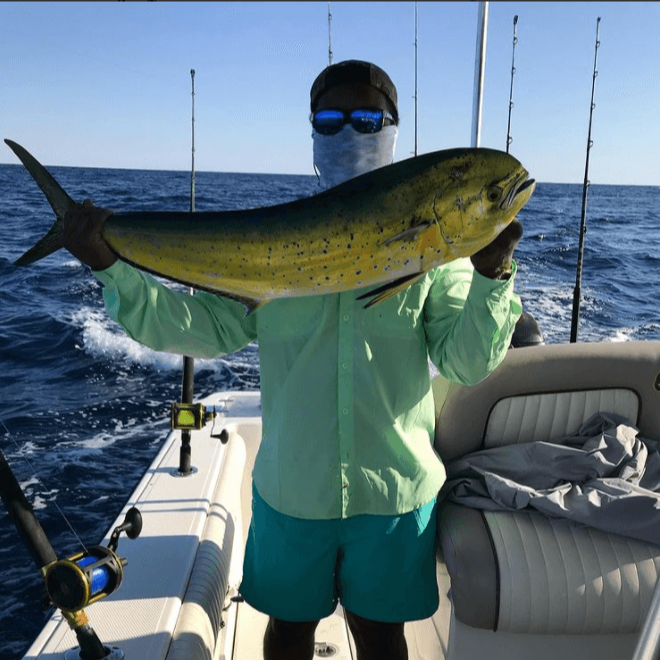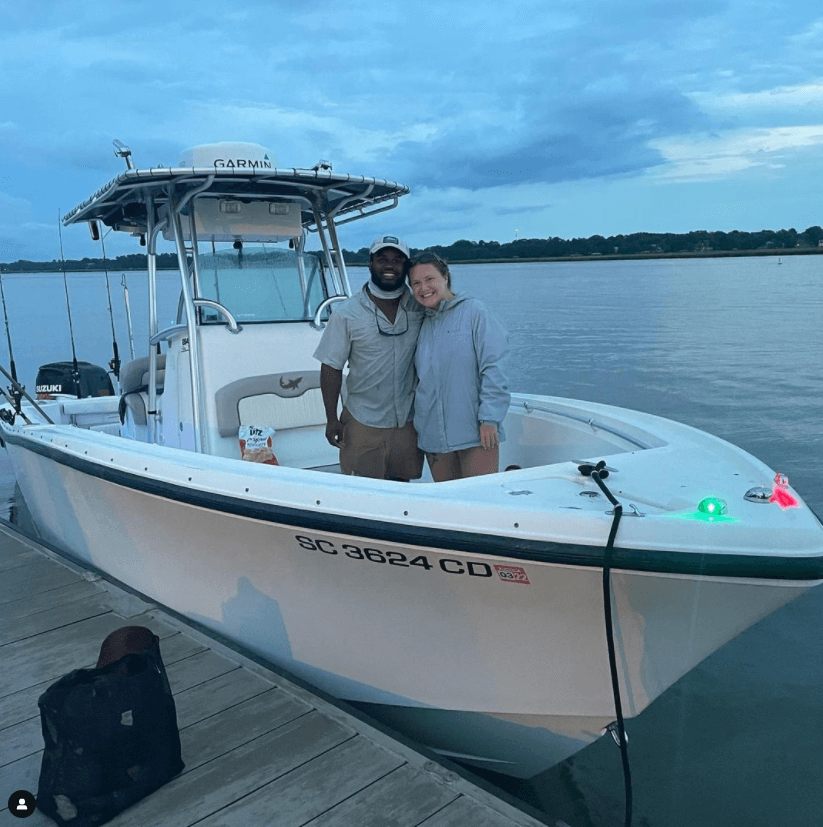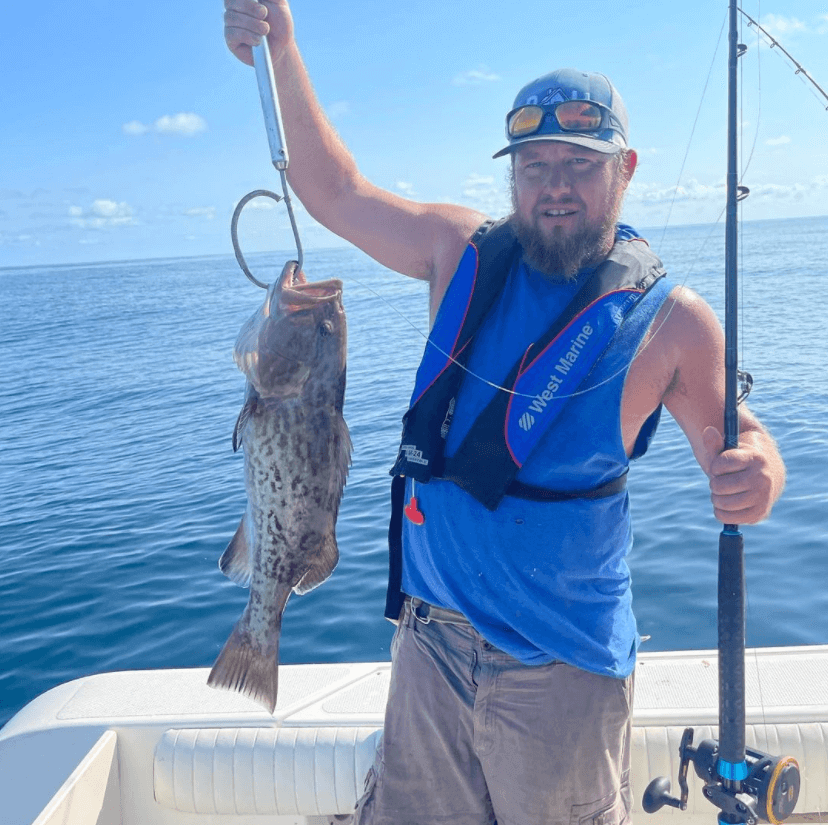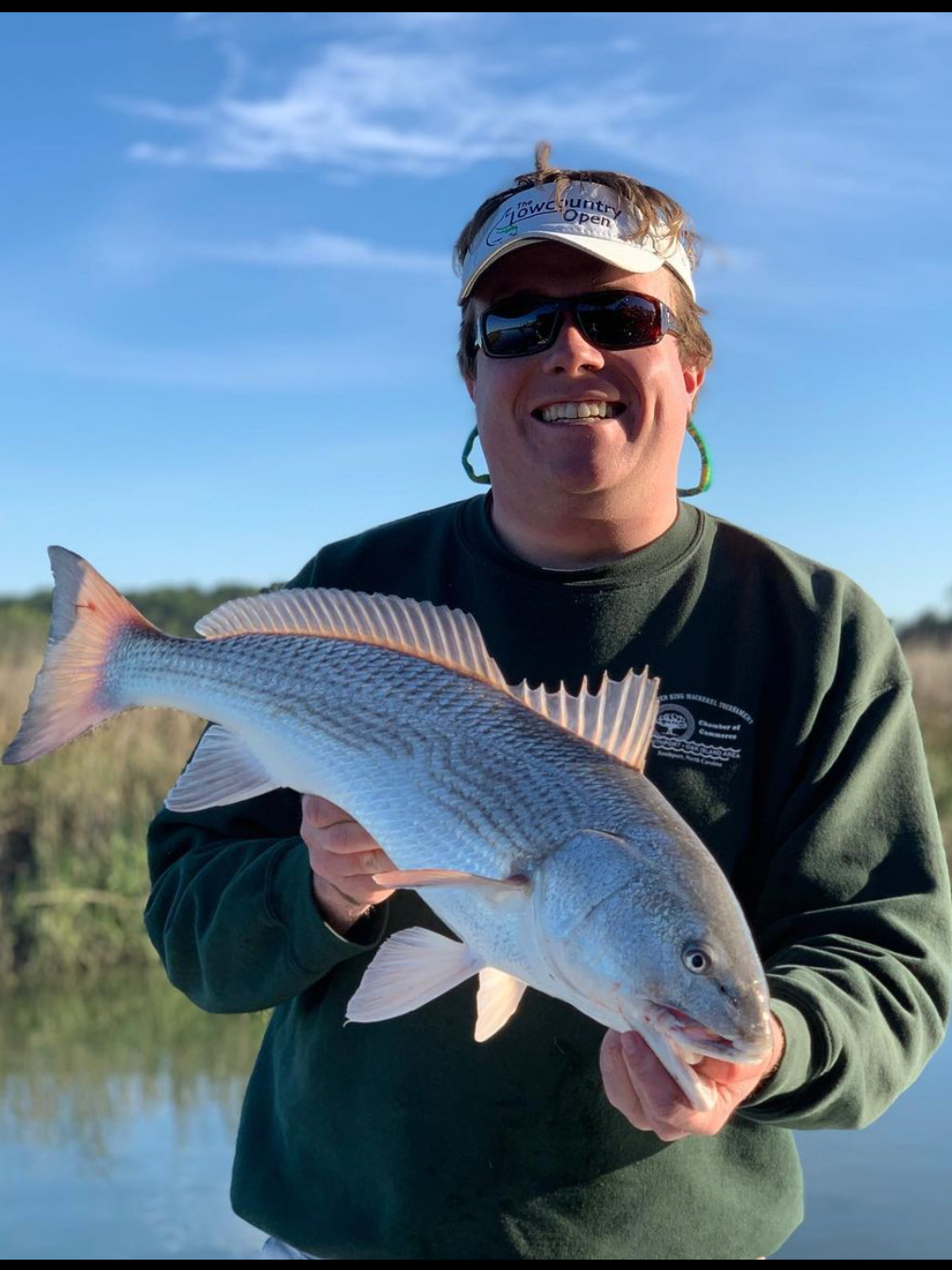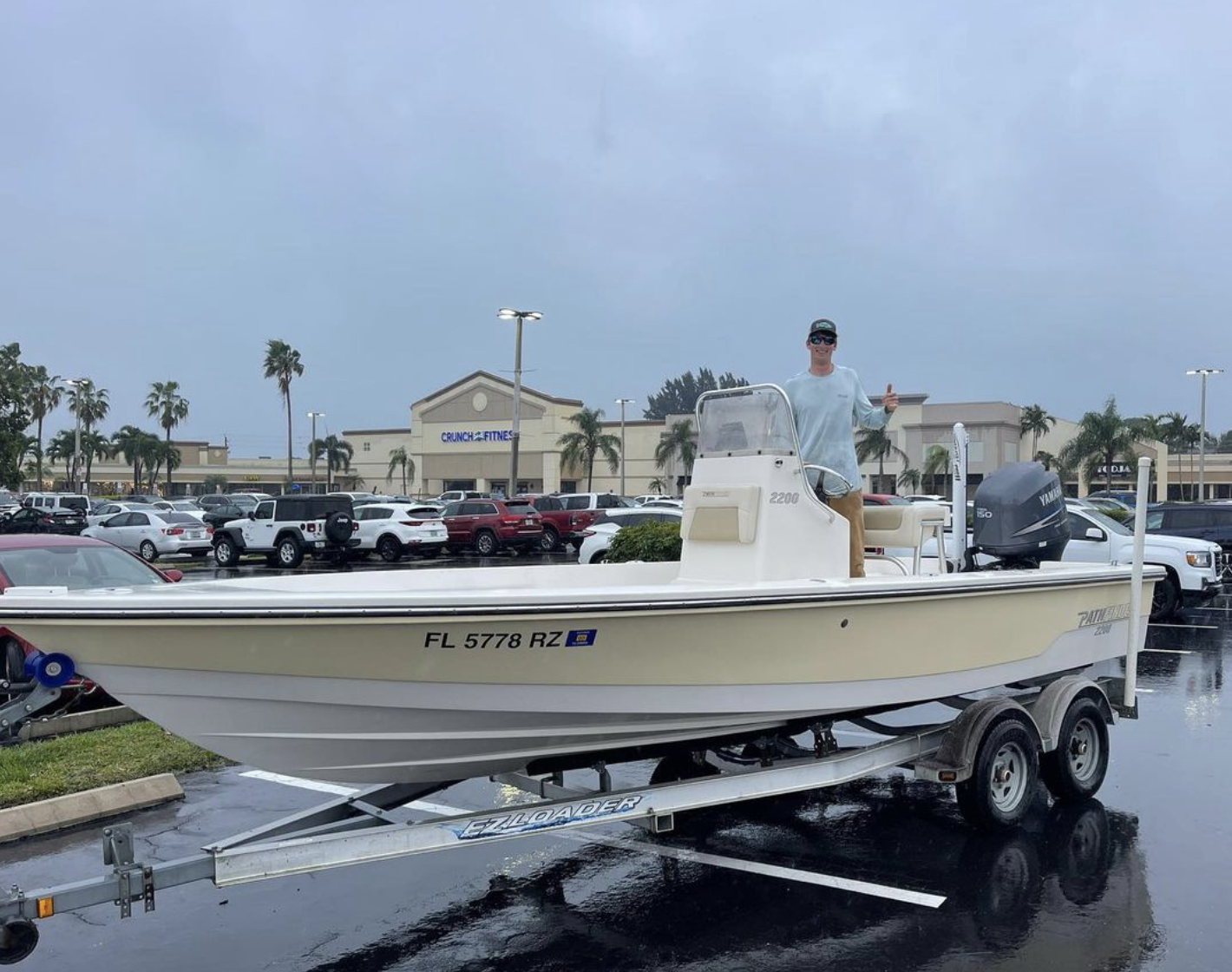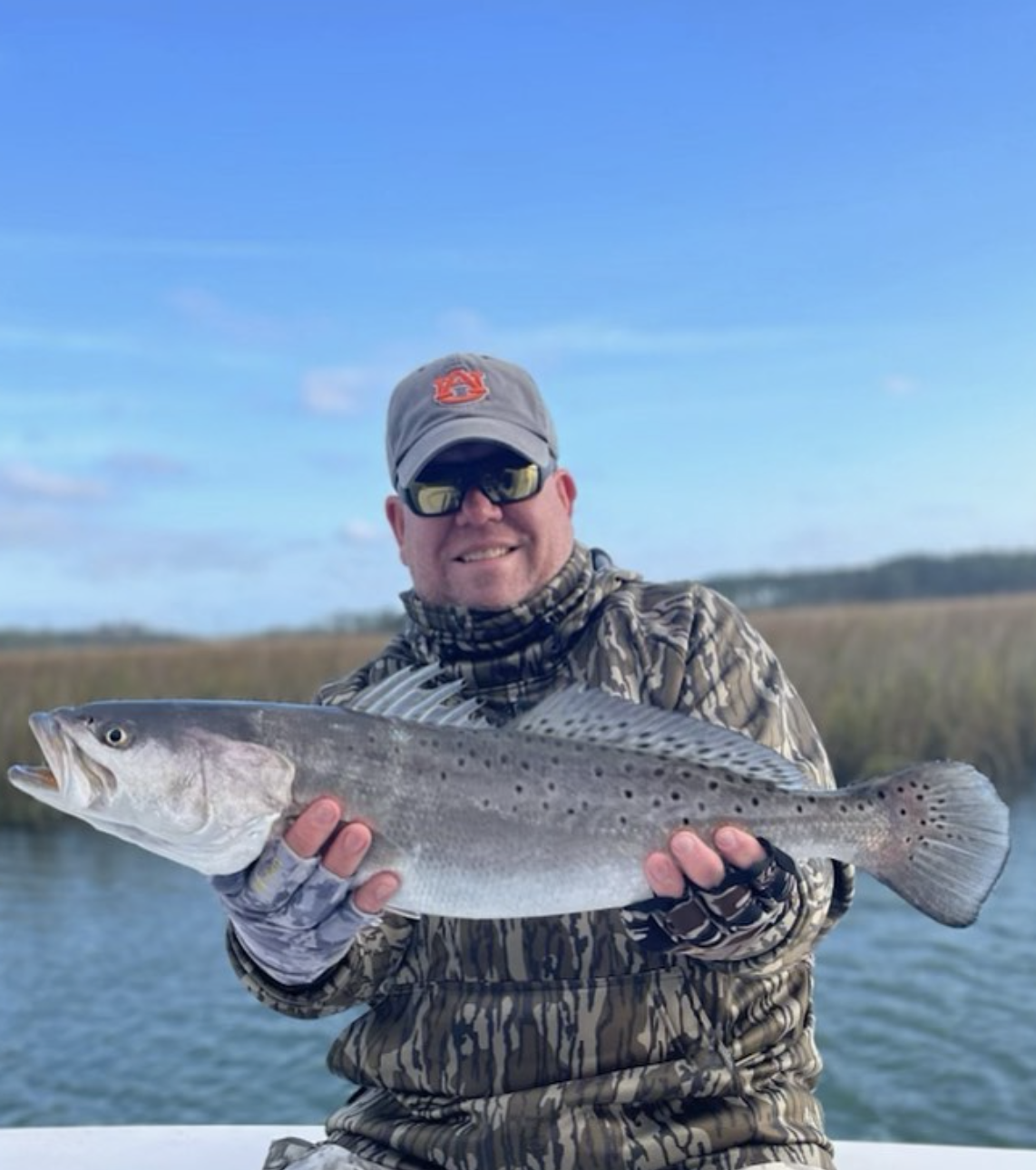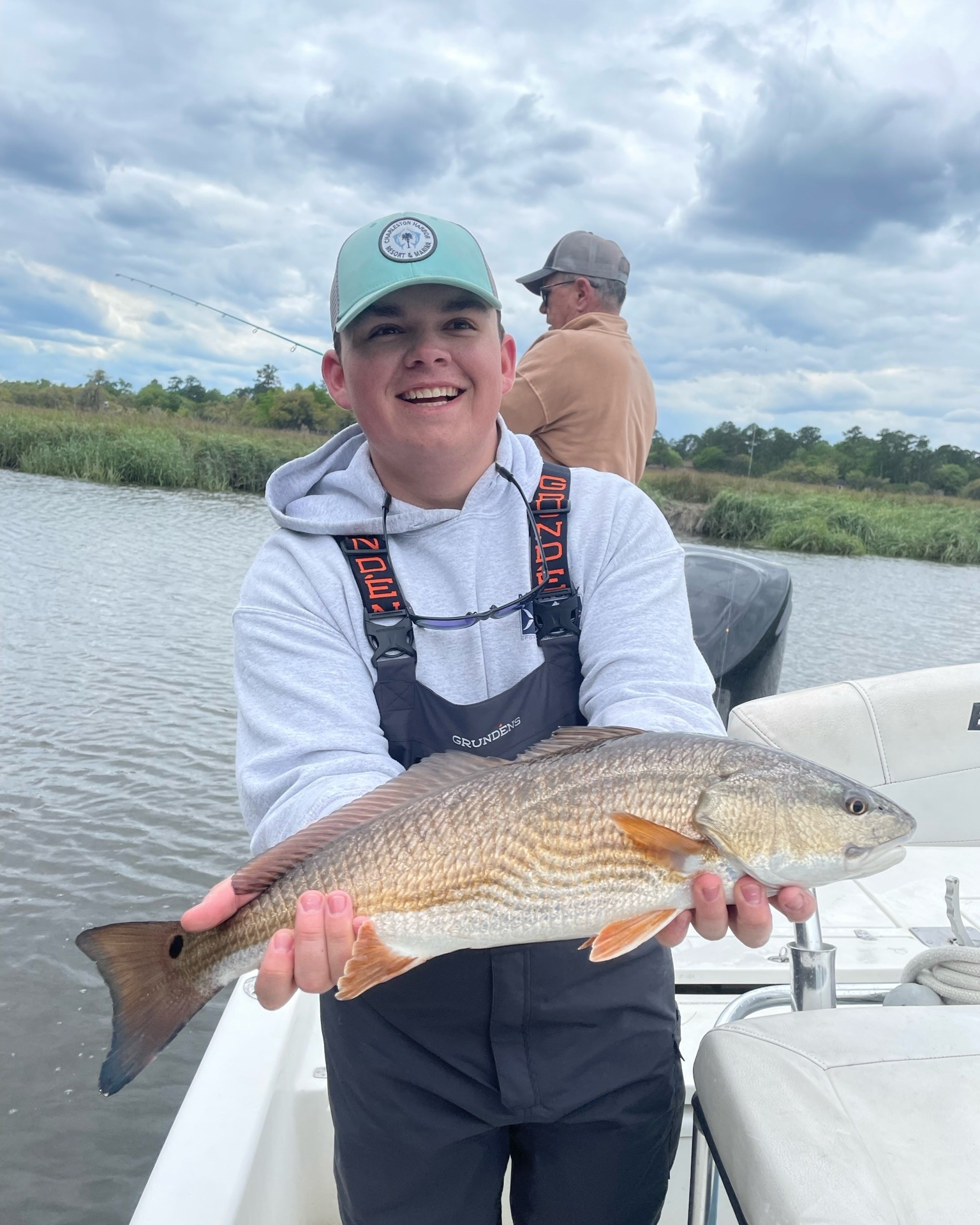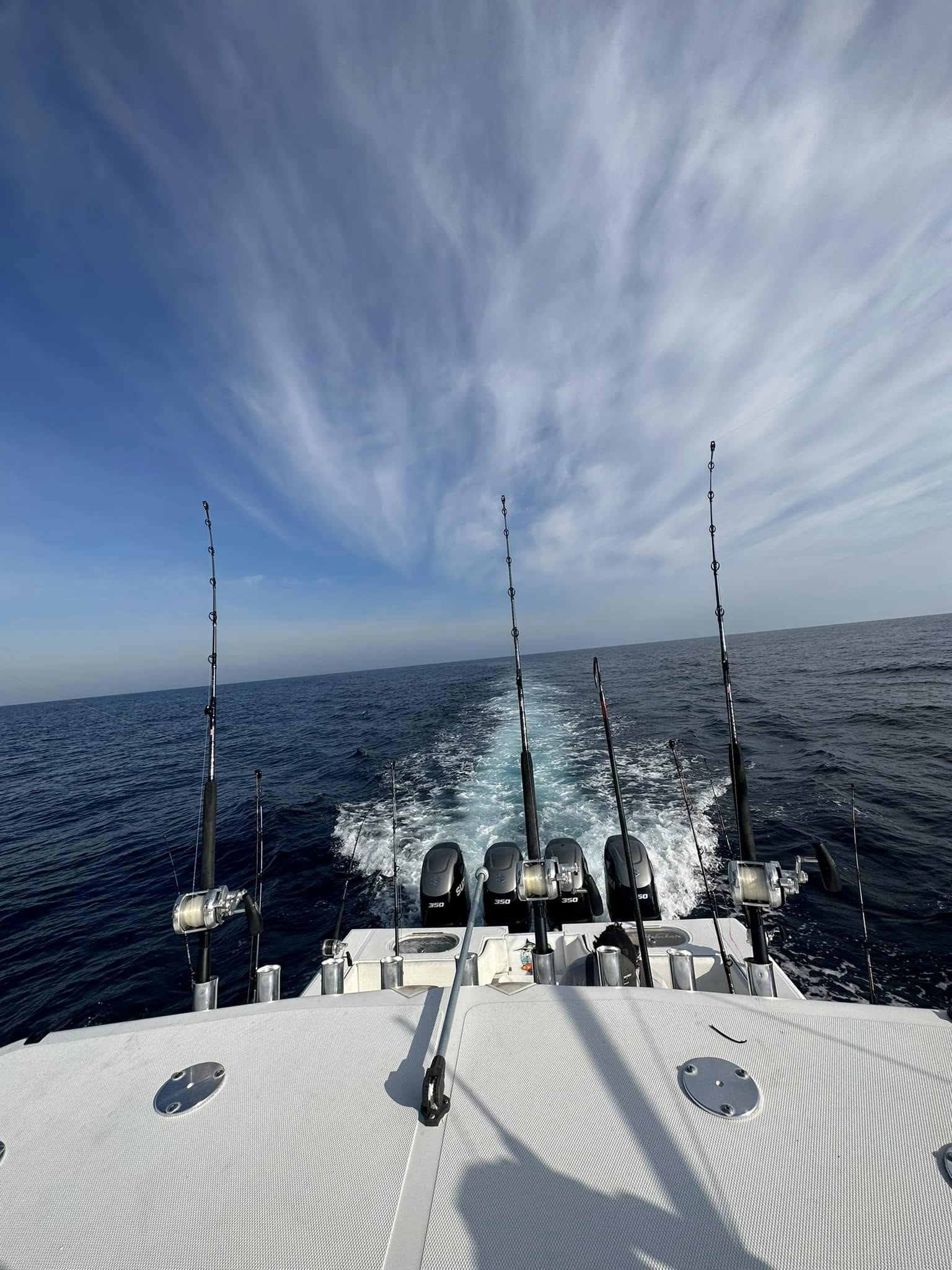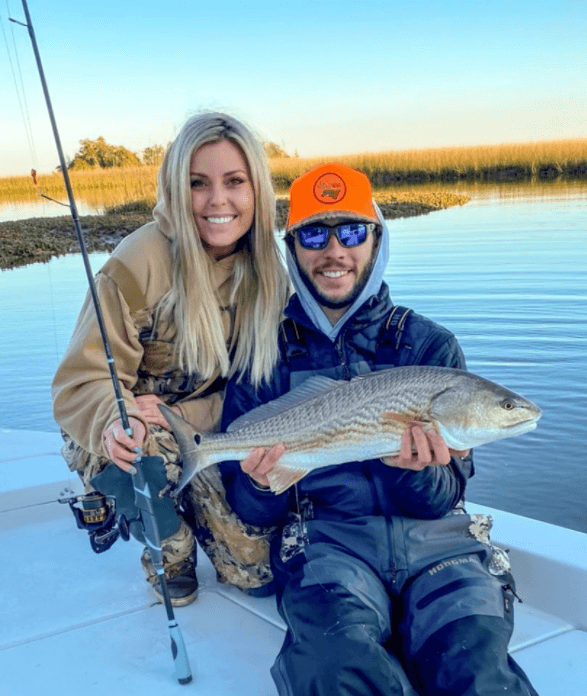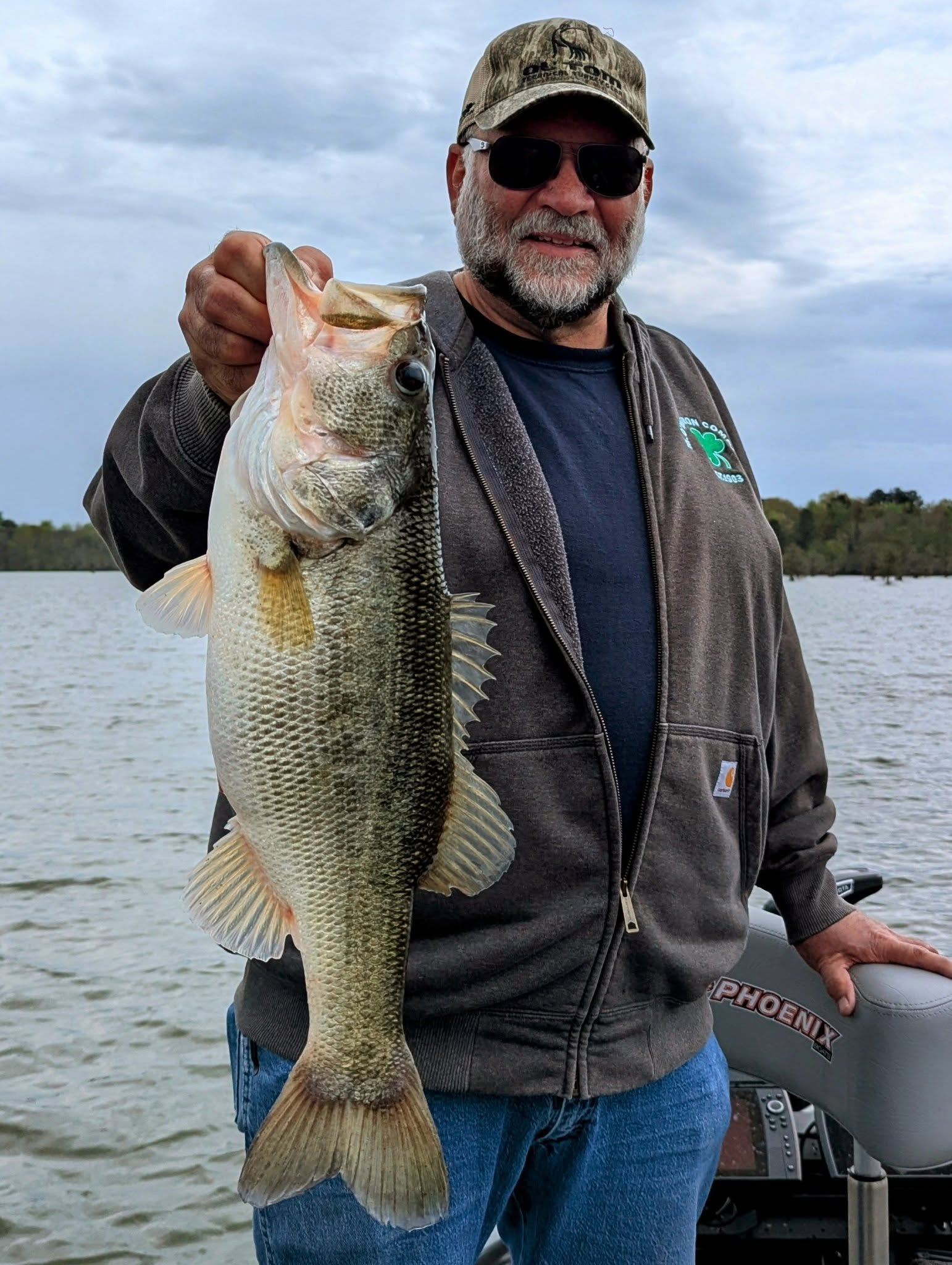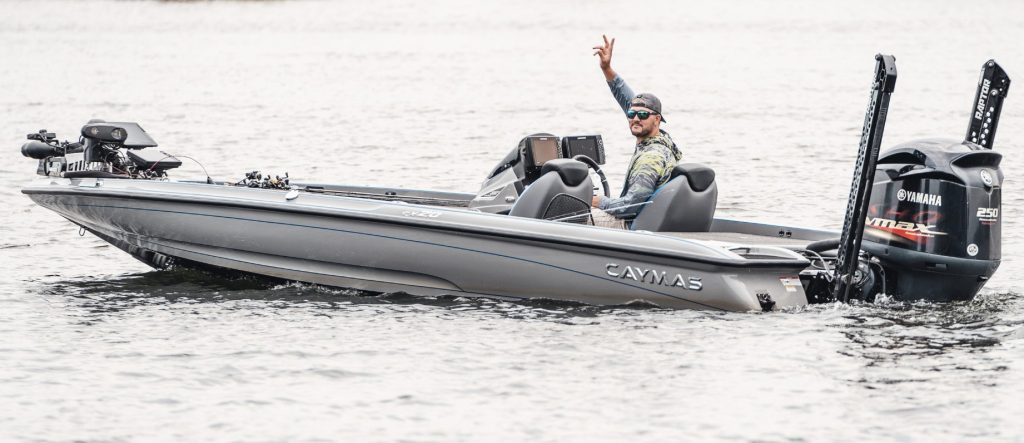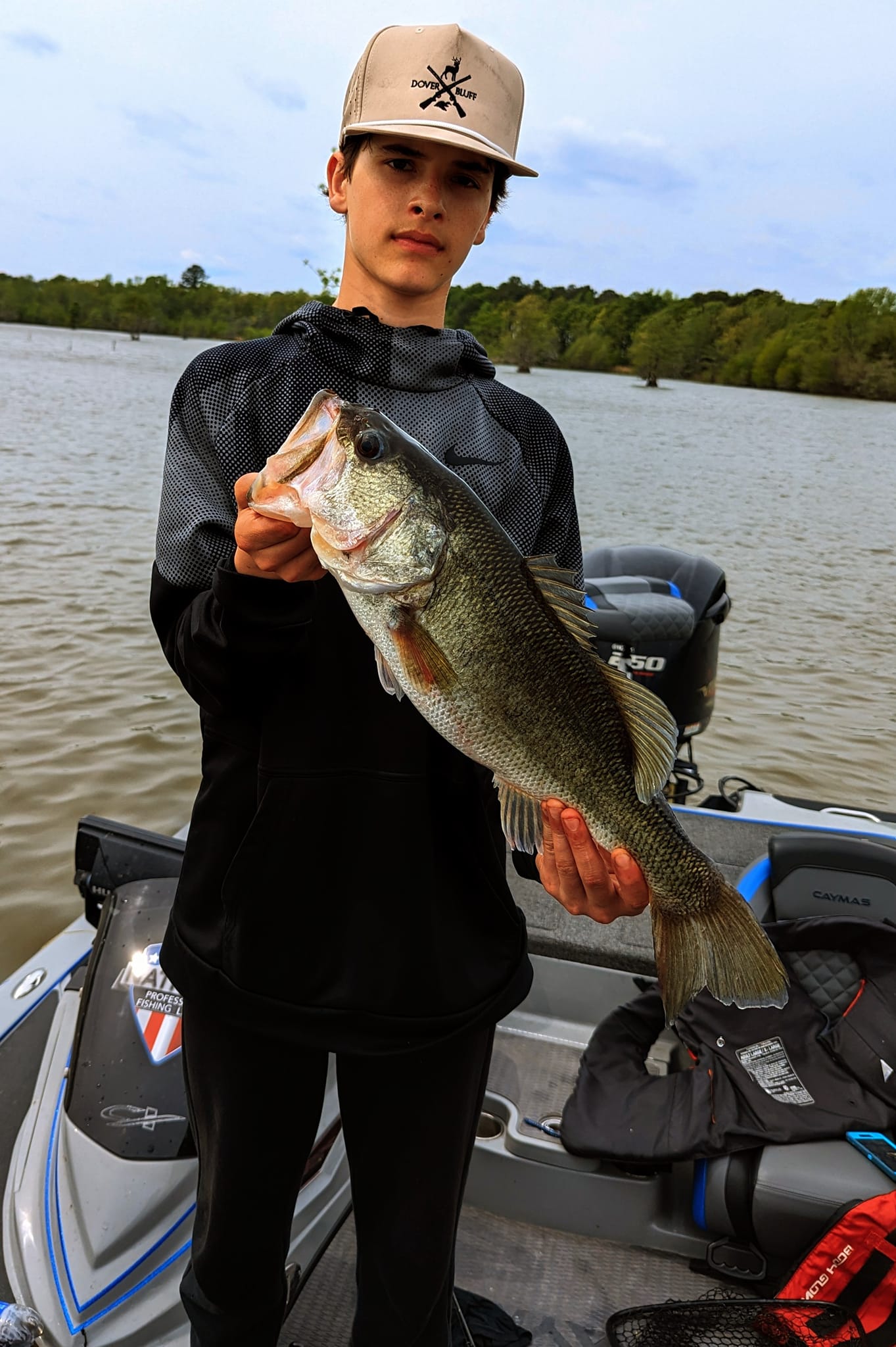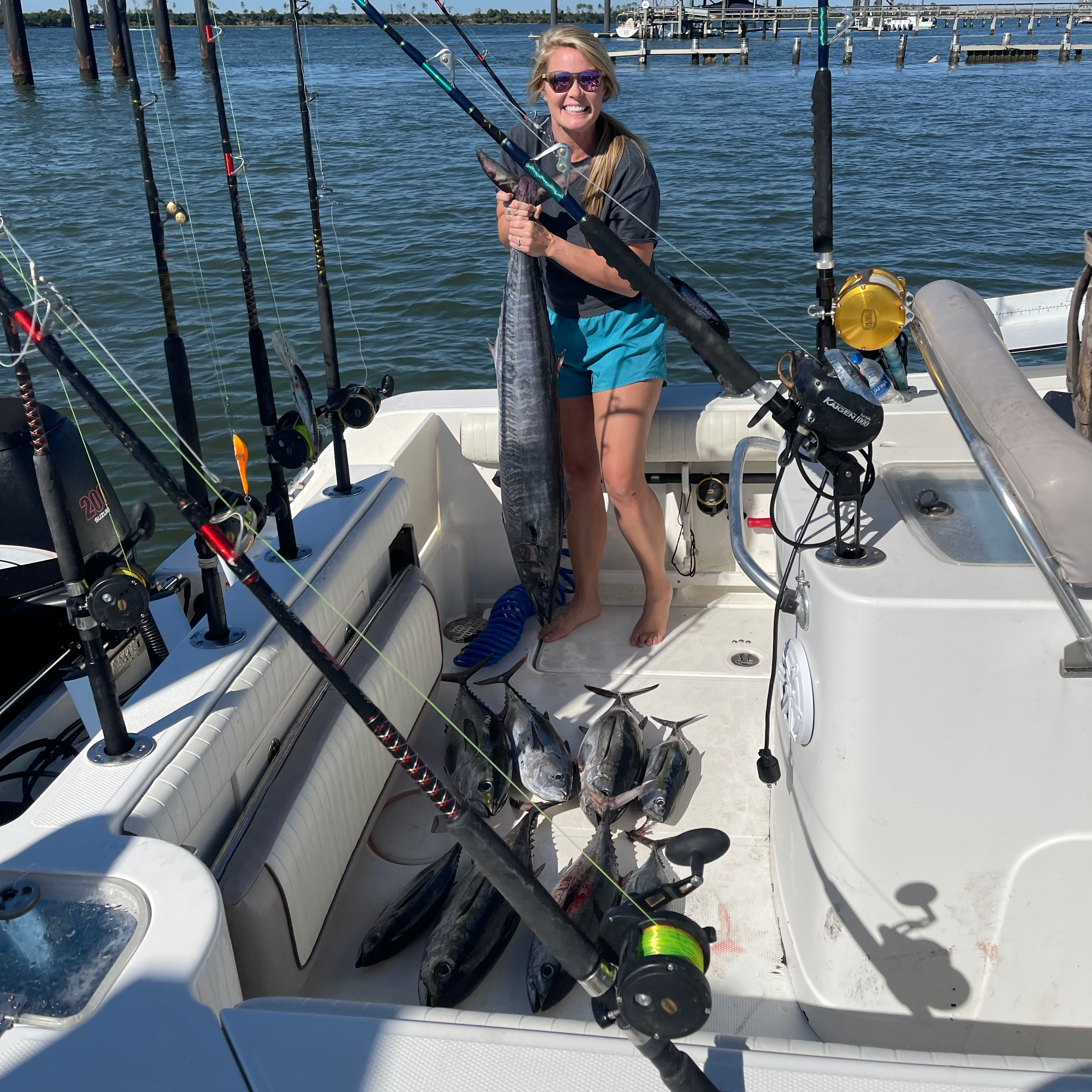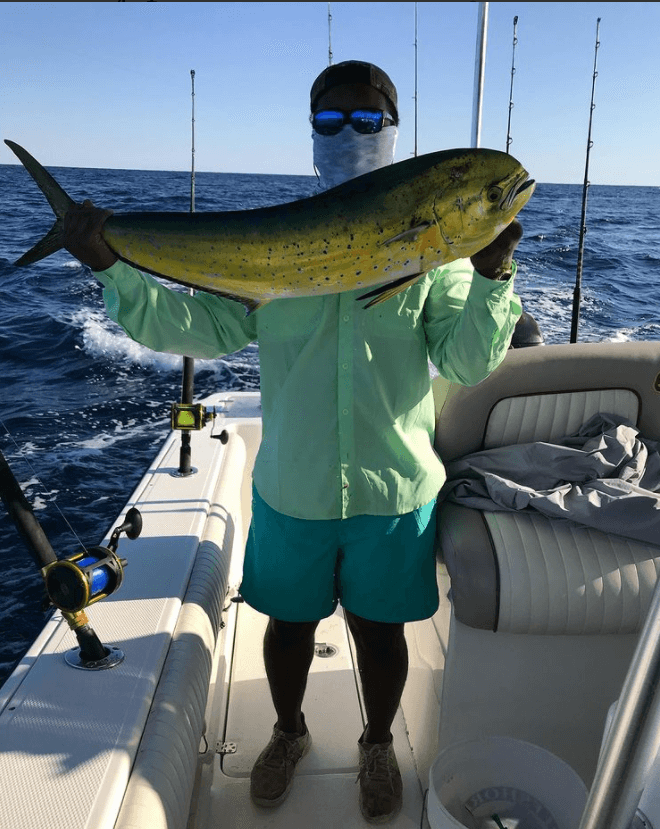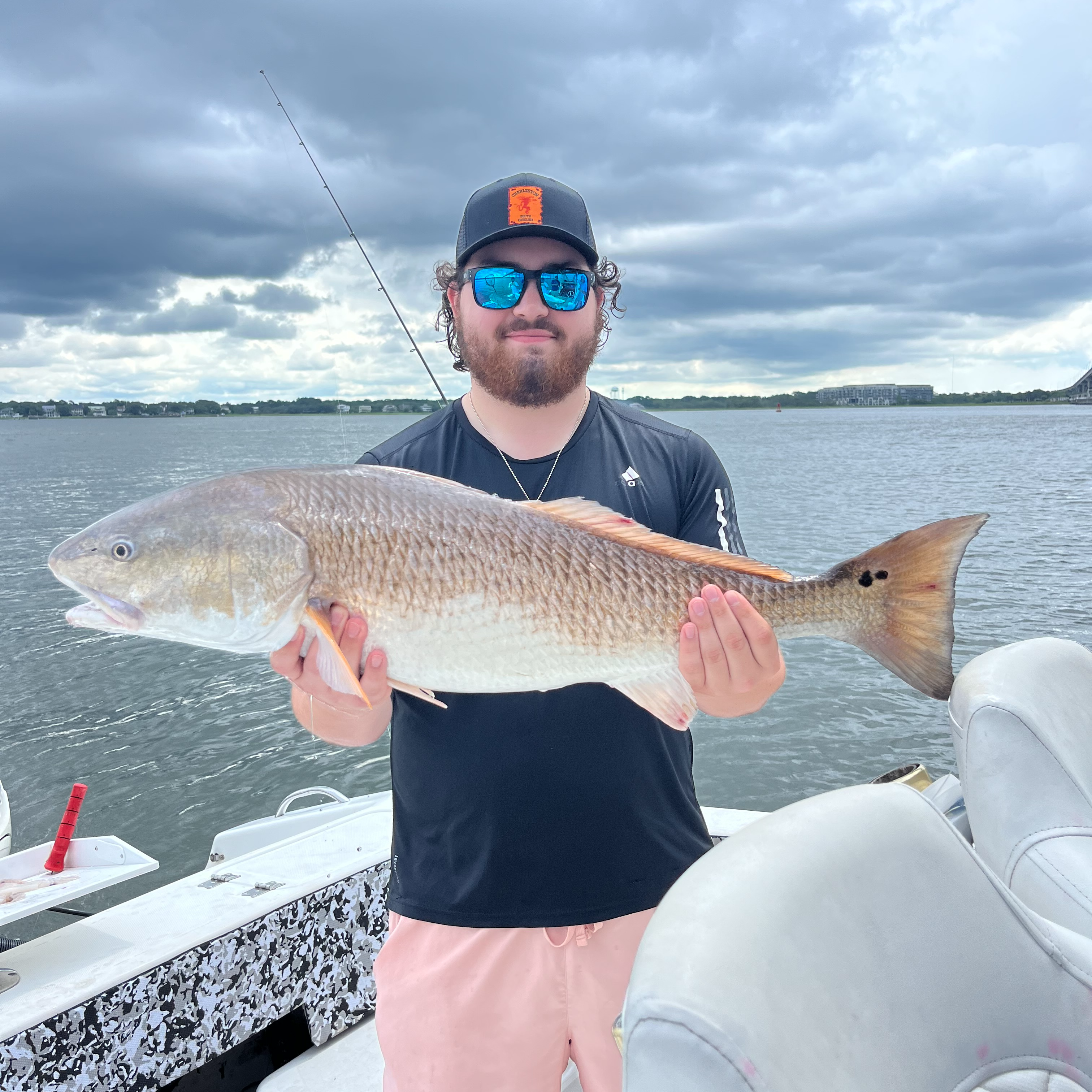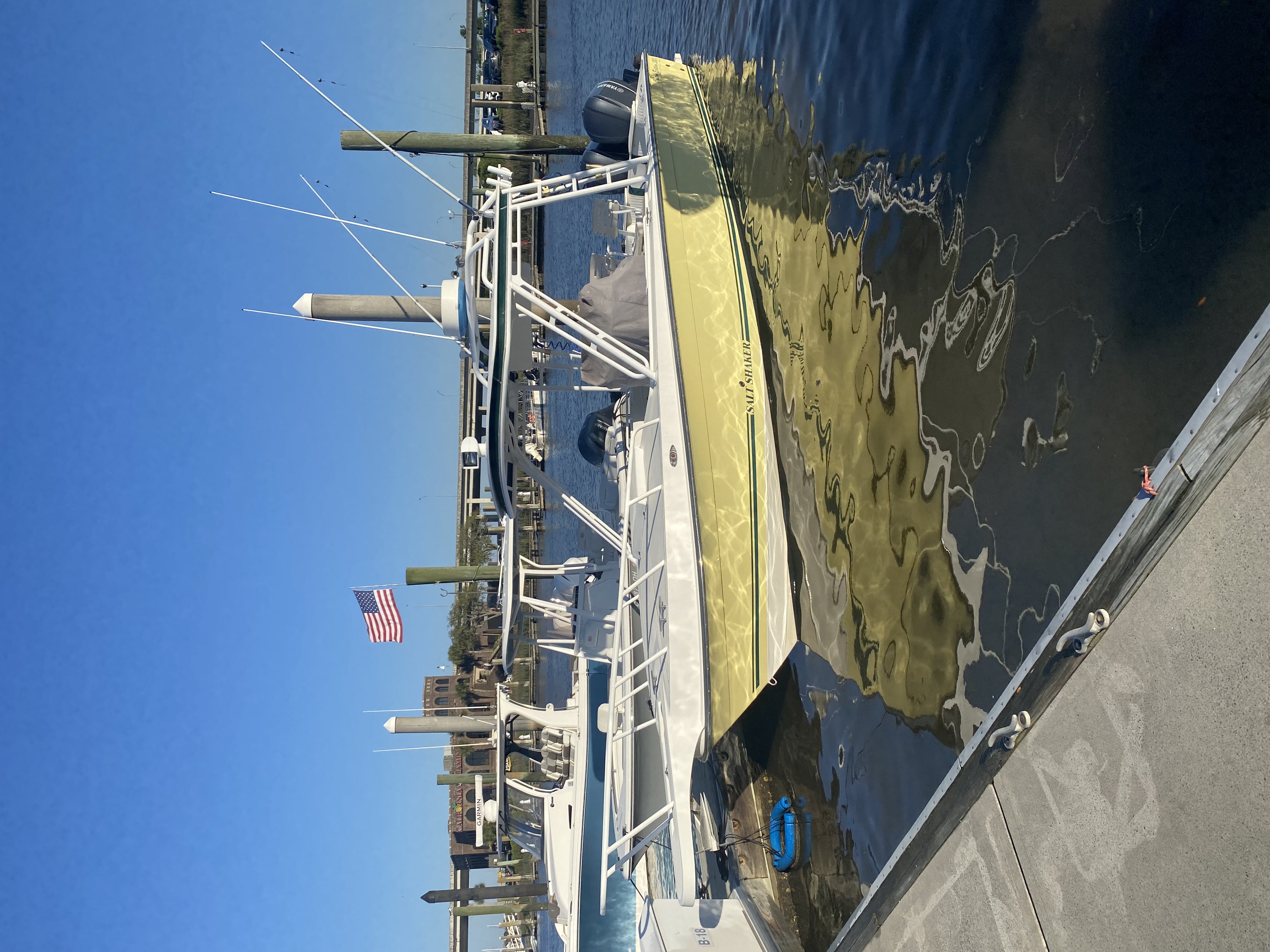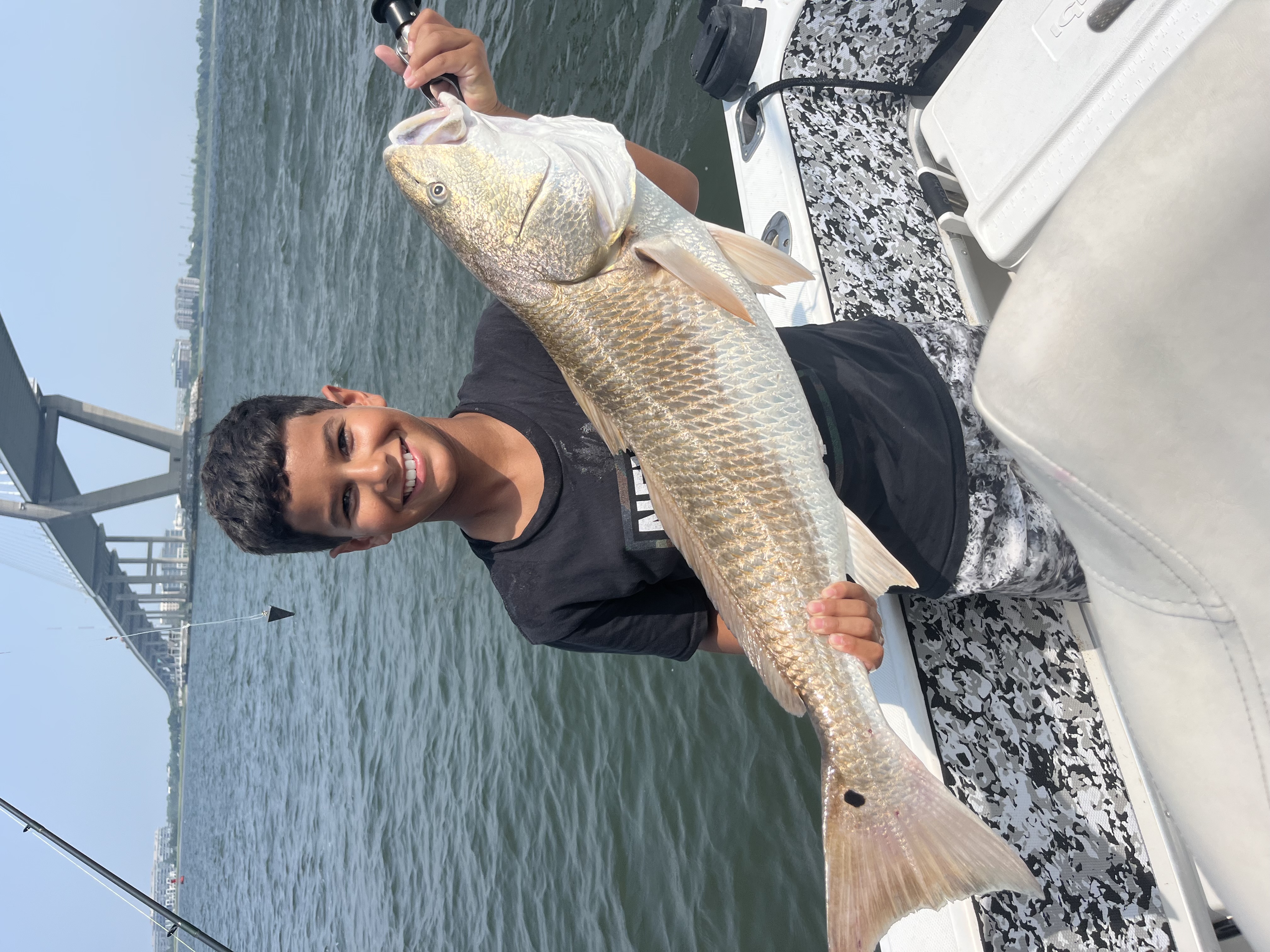Damn Good Guides
Experts Available 24/7
100% Weather Guarantee
Recently Booked Fishing Charters In South Carolina
Inshore, River Fishing in Charleston
4-6 Hour Inshore Fishing Trip
Inshore Fishing in Hilton Head Island
2 Hour Beginner Inshore Fishing
Charleston Jetty Trip
Inshore, Nearshore, River in Hilton Head Island
Family Shark Adventure Charter
Inshore Fishing in Mount Pleasant
Inshore Fishing
Deep Sea Fishing in Hilton Head Island
12 Hour Trip – Troll/Bottom Fishing
Top Cities in South Carolina
Top Types of Trips in South Carolina
Top Species for Fishing in South Carolina
“Our Damn Good Guides go above and beyond, and we’ve handpicked every single one. We’re passionate about the outdoors and look forward to getting you out on the trip of a lifetime, every time.”
Jonathan and Attison | Co-founders | Austin, Texas
More Fishing Charters In South Carolina
Deep Sea Fishing in Edisto Island
OBX Off Shore Sportsfishing
Deep Sea Fishing in Little River
North Myrtle Beach Offshore
Inshore Fishing in Folly Beach
2 Hour Trip – Shark
Inshore, Nearshore, Jetty in Charleston
6 HR Reef/Nearshore/Jetties/Harbor
Deep Sea Fishing in Mount Pleasant
8 Hour Blackfin Tuna
Inshore Fishing in Mount Pleasant
4-6hr Inshore Trip
Need a Place to Stay?
Everything to Know About Booking a Fishing Charter in South Carolina
What are the best fishing charters in South Carolina?
The best fishing charters in South Carolina are:
Fishing in the Palmetto State
South Carolina has a rich history of fishing that goes back over 300 years in the rivers and lakes that dot the state. First gaining respect for deep sea fishing in 1937 when Katherine “Cappy” Fitzgerald showed up at a dock in Georgetown with a 237-pound marlin, South Carolina quickly developed its prominence for fishing both in the salt and freshwater. In 1968, the state’s first marlin tournament was formed. Since then South Carolina has only grown as a fishing destination with backcountry rivers, freshwater lakes, and access to the Atlantic Coast all offering endless angling opportunities.
South Carolina does have year round fishing opportunities, but it depends on what you’re targeting. Due to the gulf stream funneling migratory fish, nearshore and offshore species are seasonal but the best fishing seems to occur between March and October. Inshore angling can be excellent almost all year but for freshwater, it again depends on what species you’re looking to land. For example, trout are best in spring, but catfish are best in summer. No matter what season it is, there’s always something to catch in South Carolina.
South Carolina Inshore Fishing
The coast of South Carolina is covered with estuaries and creeks that are prime fish habitat. Between the jutting shell points and marshes, there is water that’s two feet deep or less. This creates abundant flats with mud bottoms and grass beds along the coast. Tide depths change seasonally, which creates opportunities for different species to thrive at different times throughout the year. With great surf fishing on the flats, piers, and jetties, there are plenty of ways to get out on the water.
South Carolina Nearshore Fishing
Within sight of shore the water gets deeper and meets the Gulf Stream, where large migratory fish cruise in search of prey. The reefs and wrecks that litter the nearshore waters of South Carolina create an attractive stopping point for these fish as they pass through, making for excellent trolling, bottom fishing, as well as drift fishing.
South Carolina Offshore Fishing
South Carolina has the advantage of having direct access to the Gulf Stream. The Gulf Stream brings large migratory sportfish to the state with the warm waters it pulls from the Gulf of Mexico and the tropics. The current is so strong that it actually lowers the sea level around the state, moving at a rate of over 30 billion gallons per second. Another advantage that South Carolina has above other Gulf Stream states is the irregularities on the ocean floor that breaks the stream into eddies, also making great feeding ground for the fish that use it to travel.
Inshore Target Species in South Carolina
***Redfish***
South Carolina’s Lowcountry is known for its exceptional red drum fishing throughout the year where they’re known as spottail bass. Spottails tend to stick to shallower water and flats, usually traveling only a few hundred yards from their favorite spot. South Carolina’s shallow water is ideal habitat for these fish with easy feeding opportunities and protection from predators like dolphins, making for prime fishing. Even during high tide, the water is still relatively shallow along the grass flats where you can find spottails “tailing.” This means that they are nose down, rooting for fiddler crabs and their tails can be spotted poking out of the water. When it comes to spottails, South Carolina is the spot to be.
***Speckled Trout***
Speckled trout are another year round fish that’s caught in South Carolina, however, the best months are fall, winter, and spring. Fall and early winter bring in cool and clear water which is ideal for catching large quantities of trout. Spring is the time for the monster trout since larger female trout will move further inshore to spawn. Specks tend to school around oyster beds and creek mouths that dot the entirety of the South Carolina shore making them easy pickings for anglers.
***Flounder***
The estuaries, river mouths, and shallow coastal waters that hug South Carolina’s coast provide muddy bottoms where flounder thrive making them abundant in the area. Trophy flounder pushing ten pounds can also be found hanging nearshore amongst the reefs. The best season to catch one is April through November, with the peak in July. Flounder can be caught in any tide, the key is to follow the movement of the forage. As ambush predators, flounder will move to the baitfish then lie and wait for them to get too close, making it important to follow the movements of baitfish with the tide. Flounder also tend to hang out in the same areas as redfish, which means when you feel a thump on the line, you’re about to have a good fight no matter what you pull up.
***And More!***
More species like black drum, black sea bass, crab, and more can all be found cruising the shallow flats of South Carolina. With low water, plenty of estuaries, creek mouths, and mud bottoms, South Carolina has a variety of inshore fish to target.
Nearshore Target Species in South Carolina
***Amberjack***
Amberjack can be found both in state and federal waters and in South Carolina the state season is open every month except for April to allow reduced pressure during their spawn. The cooler the waters, the better for these powerful reed fish. South Carolina’s nearshore waters are full of the reefs, wrecks, and ledges that these structure-loving fish use to hunt starting at depths of 45 feet. Amberjack moves closer to shore in December making it the best month to get out there and catch one.
***Spanish Mackerel***
Between April and November, Spanish Mackerel migrate north from their wintering grounds up into South Carolina waters. Especially in the spring, they can be found cruising around inlets and reefs in nearshore waters, following baitfish in the tide. Locating structure, chumming the water, and casting are the most effective ways to get a bite. Bluefish and kingfish tend to hang out in some of the same spots, making Spanish mackerel fishing a potential mixed bag adventure.
***Cobia***
Cobia are a fan favorite in South Carolina, popular for their tough fight and excellent table fare. South Carolina’s nearshore waters are full of the reef structure that cobia are attracted to and can also be found hanging around buoys that mark shipping channels. Once known as the “Cobia Capital of the World,” it was typical to see over 300 boats crowded in one spot landing cobia. However, this led to overfishing and a decline in the population. Now, thanks to management strategies put in place by the South Carolina DNR, they can once again be found in high numbers and provide excellent fishing opportunities.
***And More!***
Nearshore reefs and wrecks litter the South Carolina Coast, along with inshore estuaries and river mouths combined with deep offshore waters near the Gulf Stream, provide many species of fish with excellent habitat. Species like barracuda, jack crevalle, sharks, and more all take advantage making for great fishing up and down the coast.
Offshore Target Species in South Carolina
***Wahoo***
The Gulf Stream brings in warm waters full of wahoo, especially in the winter and spring months despite the cooler surrounding waters. Breaks in the stream near the continental shelf create structures that hold baitfish which draw wahoo out of the Stream making for some of the best fishing spots. With great wahoo fishing comes large tournaments that produce massive fish including a 168.4-pound monster outweighing the state record, and coming within 12 pounds of the IGFA world record.
***Tuna***
Five different tunas roam the deep waters of South Carolina including albacore, big eye, bluefin, yellowfin, and blackfin. The different species of tuna have had population swings in South Carolina over the years, with blackfin being the current front runner. Beginning in March, the Gulf Stream delivers blackfin to offshore ledges, where tides create current flow over the edges. When in season, it’s common for charter boats to head out and catch a limit of blackfin.
***Mahi Mahi***
When you’re in South Carolina, you may hear that fishermen have been catching plenty of dolphin. Don’t worry though, they aren’t talking about the ones that surf in the wake behind the boat, they mean mahi mahi. Late spring brings the dolphin migration through South Carolina, moving up the coast in large schools. Floating structure and debris in current along with temperature breaks attract the baitfish that dolphin prey on, creating excellent angling opportunities.
***And More!***
The Gulf Stream runs right by South Carolina, bringing warm waters and migratory fish right to the continental shelf. Marlin, little tunny, sailfish, and more use this underwater highway and are always ready to hit the hook.
Freshwater Target Species in South Carolina
***Bass***
Largemouth, smallmouth, and striped bass can all be caught in South Carolina’s freshwater environments. Some of the state’s reservoirs hold the nation’s top bass tournaments for professional anglers, including some held by Bassmaster(B.A.S.S.). Largemouth bass are native to South Carolina and can be found in any drop of water big enough to hold them. Smallmouth, however, are invasive and have quickly spread around South Carolina to be just about as widespread. The water rich landscape comes from over 48” of annual rainfall and over 700,000 acres of freshwater. With so much water, there’s plenty of spots for the bass to hide, and plenty of fish to catch.
***Crappie***
Over time, South Carolina has become an excellent crappie fishery for crappie and now, like bass, it’s hard to find a body of water without a school or two. In March and April, it’s hard to find a lake or reservoir that’s not absolutely lighting up with crappie bites. They can be found in the shallows during clear weather or by structure like brush piles and rock ledges in water over ten feet deep. South Carolina is home to both black and white crappie, but black crappie are far more prevalent.
***Trout***
Brook, brown, and rainbow trout can all be found in South Carolina’s streams and lakes with the eastern brook trout being the only native species. Over 50,000 anglers take advantage of trout fishing in the Palmetto state each year and one of the biggest attractions is that the majority of trout resources are on publicly owned and accessible land. Most trout fishing is done in the northwest corner of the state, where the Appalachian Mountains fall to foothills, and the South Carolina Department of Natural Resources has created a year round fishery in three reservoirs. There’s plenty of other seasonal fishing opportunities in the nearby lakes making for abundant and accessible trout fishing throughout the area.
***And More!***
With a diverse landscape that ranges from mountains to low country, small streams and ponds to large rivers and lakes, there is plenty of freshwater to explore in search of fish. With species like bream, catfish, and more all over the state, South Carolina offers a variety of freshwater fishing opportunities perfect for any trip.
Best Saltwater Fishing Locations in South Carolina
***Mount Pleasant***
Mount Pleasant is a great vacation spot to see historical sites, enjoy new restaurants, and find so many things to do, especially fishing. The Wando River wraps around the town, meeting with the Cooper River to create the Charleston Harbor. This, along with access to multiple bays and sounds that line the side of Mount Pleasant allows for excellent inshore angling opportunities. It also has access to bigger species surrounding reefs within nine miles of shore and cruising the Gulf Stream beyond that. Whether fishing from Mount Pleasant Memorial Waterfront Park or heading out to the natural live bottoms, there is plenty to catch in the area.
***Charleston***
On the other side of the harbor, Charleston is another port city full of history and fine dining. Surrounded by the Stono River and Clark Sound, and with a direct launch into the Atlantic, there’s exceptional fishing for a variety of sportfish. Charleston is a year round fishery, especially when it comes to inshore species like redfish, flounder, and sheepshead, but with migrational patterns of offshore fish using the Gulf Stream, there’s a little more method to the madness. Charleston also has excellent reef fishing with 25 reefs located outside the mouth of the Charleston Harbor including the Air Force, Charleston Coastal Anglers, and Charleston Community Reefs. Whether you’d like to go find tailing reds or troll for giant pelagic species, there are plenty of ways to wet a line in Charleston.
***North Charleston***
To connect Charleston and Mount Pleasant around the Charleston Harbor is North Charleston. In between the Ashley and the Cooper Rivers this is the hub of the Lowcountry being the third largest city in the state it also has excellent shopping. Beyond being another access point to excellent inshore fishing in the harbor and rivers or the Atlantic waters both near and offshore, North Charleston is unique for the fishing in the creeks and reservoirs surrounding the city. With a source of incredible freshwater fishing opportunities anglers have a vast array of fish species to target.
***And More!***
With plenty of inshore marshes and flats, nearshore wrecks and reefs, as well as access to prime deep sea fishing on the Gulf Stream, there is plenty of saltwater fishing to be done in South Carolina. With spots like Little River, Hilton Head Island, John’s Island, and Folly Beach, the Lowcountry is tough to beat.
Best Freshwater Fishing Locations in South Carolina
***Lake Murray***
Lake Murray is one of the most popular spots to target freshwater fish in South Carolina with plenty of access by boat or on its 500+ miles of shoreline. Professional anglers in the state arrive for tournaments held throughout the year, as well as novice anglers looking to get their lines wet. With a million striped bass fingerlings stocked yearly, as well as largemouth bass, crappie, bluegill, redear sunfish, and catfish to be caught, it’s easy to see why everyone flocks to this lake. The South Carolina Department of Natural Resources has created and maintained 24 marked fish attractor spots reachable by boat, as well as piers to fish from without. You can even borrow a rod, reel, and tackle box from the Deher Island State Park if need be. With so many great fishing opportunities on Lake Murray, it’s hard not to get on the bite.
***Lake Greenwood***
Along with camping and hiking, Lake Greenwood in South Carolina provides 11,000 acres of water to catch crappie, bass, bream, perch, catfish, and stripers. If you’re on the search for stripers, largemouth bass, catfish, white perch, crappie, shell crackers, and panfish, brush piles found at the Upper Railroad Trestle, “Mid-lake Brush Pile”, and “The Birdhouse” are the best spots. Structure like ramps and bridge landings near the Buzzard Roost Dam and Rabon Creek Bridge also hold crappie along with striped and largemouth bass. Don’t forget to stop at the “catfish hole” in the Fall for some of the best catfishing in the state. Of course, some of these spots are pretty colloquial and may be hard to find in that much water. Just keep in mind there’s plenty of fish in the reservoir, and plenty of great spots yet to be found.
***Lake Wateree***
Located just 30 miles northeast of Columbia is the largest of the Catawba-Wateree lakes, and Lake Wateree comes in at 13,025 acres. With islands included, the shoreline spans 216 miles and includes the Lake Wateree State Recreation area, a bird refuge, and the Shaw Air Force Base recreation center. There are eight public boat accesses provided by the SCDNR and one under the Wateree Dam. With 17 fish attractors also maintained by the South Carolina DNR, the lake provides excellent black crappie, striped bass, largemouth bass, and catfish fishing. Like Lake Murray, stripers are routinely stocked to promote populations and great angling opportunities.
***And More!***
South Carolina is covered with waterways that connect the Appalachian Mountains to the Atlantic Ocean over various landscapes. With so much variety in terrain and water, there are countless opportunities to find excellent freshwater fishing in spots like Pee Dee River, Lake Jocassee, Lake Marion, Whitewater River, and more!
Does South Carolina have good fishing?
South Carolina is an excellent destination for fishing, offering a rich array of freshwater and saltwater opportunities. The state is dotted with lakes, rivers, and reservoirs that are prime spots for freshwater fishing. Notable locations like Lake Murray, Lake Hartwell, and the Santee Cooper Lakes are renowned for their abundant populations of Largemouth Bass, Striped Bass, Crappie, and Catfish. These waters cater to various fishing styles, whether you prefer fishing from the shore, a boat, or even a kayak. South Carolina’s warm climate and well-maintained fisheries ensure that anglers can enjoy productive trips throughout the year.
In addition to its freshwater options, South Carolina's coastal waters provide fantastic saltwater fishing experiences. The Atlantic coastline, with its estuaries, tidal creeks, and offshore reefs, is home to a diverse range of species. Inshore fishing around Charleston, Hilton Head, and Myrtle Beach offers the chance to catch Redfish, Speckled Trout, Flounder, and Sheepshead. For those looking to venture further offshore, deep-sea fishing charters target species like King Mackerel, Snapper, Grouper, and Mahi-Mahi. The state’s coastal fishing opportunities are enhanced by the scenic beauty of its marshes, beaches, and islands, making for an enjoyable and picturesque fishing experience.
South Carolina’s fishing community is well-supported by numerous events, resources, and conservation efforts. The state hosts various fishing tournaments, such as the Bassmaster Elite Series and the Carolina Billfish Classic, attracting anglers from near and far. Local bait shops, fishing guides, and online resources provide valuable information and assistance, ensuring that both novice and experienced anglers can make the most of their trips. South Carolina’s dedication to sustainable fishing practices and habitat preservation helps maintain healthy fish populations and pristine fishing environments. Overall, with its diverse and plentiful fishing opportunities, supportive community, and commitment to conservation, South Carolina is a top-notch destination for fishing enthusiasts.
Recent Reviews
The Best Places to Fish in South Carolina
- Anderson, SC
- Awendaw, SC
- Charleston, SC
- Columbia, SC
- Edisto Island, SC
- Folly Beach, SC
- Fort Mill, SC
- Goose Creek, SC
- Hilton Head Island, SC
- Johns Island, SC
- Lake Murray of Richland, SC
- Little River, SC
- Moncks Corner, SC
- Mount Pleasant, SC
- Murrells Inlet, SC
- Myrtle Beach, SC
- North Charleston, SC
- Port Royal, SC
- Ridgeway, SC
- Salem, SC
- Summerton, SC
Top Targeted Fishing Species in South Carolina
- African Pompano
- Albacore Tuna
- Almaco Jack
- Amberjack
- Atlantic Mackerel
- Barracuda
- Black Drum
- Black Grouper
- Black Seabass
- Blackbelly Rosefish
- Blackfin Tuna
- Blacktip Shark
- Blue Catfish
- Blue Marlin
- Bluefish
- Bonito
- Bonnethead Shark
- Bream
- Brown Trout
- Bull Shark
- Bullhead Catfish
- Cero Mackerel
- Channel Catfish
- Cobia
- Crappie
- Cubera Snapper
- Dusky Shark
- False Albacore
- Flathead Catfish
- Flounder
- Gag Grouper
- Grunt
- Hammerhead Shark
- Hybrid Striped Bass
- Jack Crevalle
- Kingfish
- Ladyfish
- Largemouth Bass
- Lemon Shark
- Lionfish
- Mahi Mahi
- Mangrove Snapper
- Mutton Snapper
- Perch
- Rainbow Trout
- Ray
- Red Grouper
- Red Snapper
- Redfish
- Sailfish
- Sandbar Shark
- Scamp Grouper
- Scup
- Sheepshead
- Shrimp
- Skate
- Skipjack Tuna
- Smallmouth Bass
- Snowy Grouper
- Spadefish
- Spanish Mackerel
- Speckled Trout
- Spinner Shark
- Spotted Bass
- Stingray
- Strawberry Grouper
- Striped Bass
- Swordfish
- Tarpon
- Thresher Shark
- Tiger Shark
- Tilefish
- Triggerfish
- Tripletail
- Vermillion Snapper
- Wahoo
- Warsaw Grouper
- Weakfish
- White Bass
- White Marlin
- Whiting
- Yellowfin Tuna
Most Popular Tour Species in South Carolina
Top Fishing Techniques in South Carolina
- Artificial Lure Fishing
- Bottom Fishing
- Bowfishing
- Cut Bait Fishing
- Deep Dropping
- Drift Fishing
- Fly Fishing
- Gigging
- Heavy Tackle Fishing
- Jigging
- Light Tackle Fishing
- Live Bait Fishing
- Sight Casting
- Surf Fishing
- Topwater Fishing
- Trolling
- Wading
Top Types of Tours in South Carolina
Featured Cities
- Fishing Charters Near Me
- Austin Fishing Guides
- Biloxi Fishing Charters
- Bradenton Fishing Charters
- Cabo San Lucas Fishing Charters
- Cancun Fishing Charters
- Cape Coral Fishing Charters
- Charleston Fishing Charters
- Clearwater Fishing Charters
- Corpus Christi Fishing Charters
- Crystal River Fishing Charters
- Dauphin Island Fishing Charters
- Daytona Beach Fishing Charters
- Destin Fishing Charters
- Fort Lauderdale Fishing Charters
- Fort Myers Fishing Charters
- Fort Walton Beach Fishing Charters
- Galveston Fishing Charters
- Gulf Shores Fishing Charters
- Hatteras Fishing Charters
- Hilton Head Fishing Charters
- Islamorada Fishing Charters
- Jacksonville Fishing Charters
- Jupiter Fishing Charters
- Key Largo Fishing Charters
- Key West Fishing Charters
- Kona Fishing Charters
- Lakeside Marblehead Fishing Charters
- Marathon Fishing Charters
- Marco Island Fishing Charters
- Miami Fishing Charters
- Montauk Fishing Charters
- Morehead City Fishing Charters
- Naples Fishing Charters
- New Orleans Fishing Charters
- New Smyrna Beach Fishing Charters
- Ocean City Fishing Charters
- Orange Beach Fishing Charters
- Panama City Beach Fishing Charters
- Pensacola Fishing Charters
- Pompano Beach Fishing Charters
- Port Aransas Fishing Charters
- Port Orange Fishing Charters
- Rockport Fishing Charters
- San Diego Fishing Charters
- San Juan Fishing Charters
- Sarasota Fishing Charters
- South Padre Island Fishing Charters
- St. Augustine Fishing Charters
- St. Petersburg Fishing Charters
- Tampa Fishing Charters
- Tarpon Springs Fishing Charters
- Venice Fishing Charters
- Virginia Beach Fishing Charters
- West Palm Beach Fishing Charters
- Wilmington Fishing Charters
- Wrightsville Beach Fishing Charters
How are fishing conditions in South Carolina?
View South Carolina Fishing Reports from our damn good guides.
Didn't Find What You Were Looking For?
Our guides are Damn Good Guides, which means they’re vetted by our team of outdoor experts who know them on a first-name basis. We hand pick each and every one of them, and our network spans all across the US and beyond.
The proof is in the pudding, and we’re incredibly proud of our 4.9 / 5 average review score. Hit the button below to see more trip options:
